Glorious Invocations - An in-depth guide
DJjojo
February 19, 2018
About this guide
This guide aims to explain, when to pick Invoker, what build to go, depending on the game, how to learn and train him and how to play with certain builds.
It is not about how to play Dota 2 or how to play midlane in Dota 2, so I do assume basic skills and knowledge (lasthitting, creep aggro, farming patterns, basic prediction skills, ...).
It is also not targeted at players who are starting with Dota. It is targeted at decently experienced players that haven't tried to learn Invoker yet.
I write this guide from my experience of over 1.6k games with Invoker. (Dotabuff)
Obviously I am no high-tier MMR player, but I am dedicated to having fun, experiment with and theory-craft around Invoker, so I thought other players might find the insight I gained from my experience interesting.
Therefore explanations in this guide are from and for the 3-5k bracket. I always hope to be objective when discussing concepts in this guide, but everything is still slightly biased from my skill-bracket, so some points I touch might be not relevant in significant higher or lower MMR games. ('Ganks mid with Invoker are strong' might be a thing that is common knowledge in 5k+ MMR but is not in -3k MMR and vice versa 'Build for not getting pulled tangos' is a common problem in -3k MMR but not in 5k+)
From my perspective, most of the following chapters are hopefully MMR-independt, but it might be good to keep in mind, that this is still a single persons opinion.
The first part of the guide will be about how to get mechanical good at Invoker, how to learn spells, train spell usage and combos, independent from any specific situation in a game or a certain build order.
Then I will go very detailed over everyone of Invokers spells and also in the following chapter go through every item that is useful to him, why and when it should be purchased.
The chapter after that will handle combos. It won't be a list of common combos, but rather a guide on how to think up a combo, fitting to a certain situation.
Then I'll touch on when to pick Invoker, how to pick a build and finally go into detail about the three showcased builds.
The chapter 'Beyond Builds' will talk about general concepts/situations that are specific to Invoker, but not specific to any build.
At last I'll discuss some builds or playstyles that are custom tailored to deal with specific heroes (The infamous tripple Ring of protection build versus Phantom Assassin for example)
I am of course open to any suggestion to improve the guide, so if you got ideas on what points I should elaborate in more detail, any questions on hero-specific matchups or just ideas for fun cheese-builds, leave a comment and I'll try to include it in the guide.
At last (and this is almost just a meme, I hope), I am no native english speaker, so excuse the occasinal spelling or grammatical error, but don't be shy to let me know, so I can learn.
Introduction to Invoker
Invoker is an intelligence hero, almost always played in the midlane with a very unique mechanic that allows him to make use of 10 strong spells.
Those spells allow him to be put in most of those categories like nuker, escape, teamfight controller, split pusher.
He is a hero that can level up his spells up to level 25, making him desperate for any experience. He also scales great with any money he gets his hands on that he can put in items to be everything from a maximum utility teamfighter to a hard splitpush threat.
Invoker is one of the most difficult heroes to learn in Dota. You have to learn the pure mechanics, manage the cooldowns of your spells intuitively and be on a very high level of positioning.
In return he is also one of the most rewarding heroes to play. Be it landing a Sun Strike accross the map, catch 5 heroes with a Tornado and a following huge combo, or just escaping on the edge of your teeth with Ghost Walk, Invoker is defenitively fun to play, if you get a bit familiar with the hero.
Invoker is in most matchups very weak in the beginning of a game. You never have the mana to realy spam spells and you are very squishy. But as you level up, you'll get noticable more powerfull and will be able to take over games all on your own.
Learning/Training with Invoker
There are many aspects to become a good or at least decent Invoker and there are many different ways to improve at those points. In this chapter I will list some methods and exercises that are useful to 'gitgud'.
Invoking Spells
The first and most basic thing you should be concerned about when starting to learn Invoker is obviously: 'How do I actually use spells other than
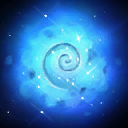 Quas
Quas,
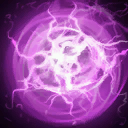 Wex
Wex,
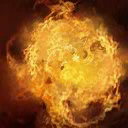 Exort
Exort and
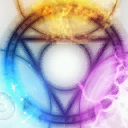 Invoke
Invoke?'
So let's get into the basic mechanic Invokers concept is build on.
Invoker has three skills
 Quas
Quas,
 Wex
Wex and
 Exort
Exort that you can cast without cooldown or manacost. Casting any of those will add a instance of the respective buff. You can have only three at a time and casting a new one will replace the oldest one.
You also have to (in the beginning free) variable skill-slots. When you cast
 Invoke
Invoke, the first (left) slot will be replaced with a new spell, depending on which three buffs from Quas/Wex/Exort you have active. The spell that used to be in this left slot will replace the spell in the right slot. That is the act of invoking a new spell.
With this system you can invoke 10 different spells of which you can have 2 at the same time at your disposal.
All spells do cool down, whether they are in the two active slots or not
As this system is vastly different from any other hero, it is your first job to get good at it. The truth is that the only thing you can do to do so, is training.
The simplest way is to play the
invoker-game.
This website let's you train invoking spells in various ways, against the time, without time limit, single spells or three consecutive spells.
Just spend some time playing it, before a game, in queue time or after and it will be no problem to fluently go from thinking of a spell to quickly invoking it and having it ready to fire.
Larning those ten combinations sounds like a quite annoying task at first, but it is actually not very hard and (now I don't want to scare anyone) by far the easiest part of becoming a good Invoker.
The Spell Cycle Game
The next step to distance yourself from those Invokers who only use two or three spells the whole game is to get familiar with ALL of the spells.
At this point I don't mean to know all damage or range stats about them, perfectly knowing how to combo up 5 spells in a row or what the perfect situation for what combination is. Those are all things that come with a special fetish for numbers or lots of experience.
The first thing to learn is to be aware of all your spells.
Everyone rembers Sunstrike and Coldsnap, because you once got killed on your way home after a clutch escape or you were desparetly trying to cast your
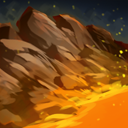 Fissure
Fissure but you just couldn't get the damn thing on the ground. Therefore when you play Invoker, those are maybe the first spells you always think of when approaching a fight.
But even though those are good spells, you probably are forgetting that maybe a
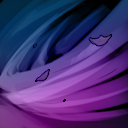 Tornado
Tornado or an
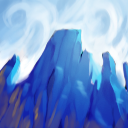 Ice Wall
Ice Wall is more appropiate here.
A good exercise to train this skill is to load up the demo mode (or a local lobby with cheats activated), level up to level 25, activate 'Free Spells' (
-wtf) and get some standard 6-slot items (
 Boots of Travel
Boots of Travel,
 Blink Dagger
Blink Dagger,
 Aghanim's Scepter
Aghanim's Scepter,
 Octarine Core
Octarine Core,
 Refresher Orb
Refresher Orb,
 Shiva's Guard
Shiva's Guard for example).
Then you make a list of the ten spells(can be mental, using the ingame popup help menu, on a second monitor or simply pen and paper on your desk) in any order.
Now you work down that list, cast every spell in that order once and repeat over and over again. Start slow, go faster, but most importantly try not to forget any spell.
With this exercise you become better at having all spells in mind and therefore might have more options in mind, when approching something ingame.
Botgame Rampage
Here comes a quite fun exercise.
Get into a local lobby with bots and cheat yourself to level 25 and a 6-slot item build but don't use
-wtf.
Now try to kill bots all over the map, but focus on using as many different methods as possible.
This form of entertainment can be used at any point of your learning curve for Invoker. It is good to get to know the spells as a beginner and even after my 1.4k games I still do this from time to time to keep fluent with invoking.
Also, if you don't use
-wtf you'll slowly get a feeling for the cooldown of all your spells. With every other hero you can directly see the cooldown of your spells, but with Invoker it can happen to you that you invoke a spell that is still on cooldown, wasting precious time (and mana, if you don't have Aghs).
I advise to experiment with the setup. Don't always use the lvl25-6slot situation (although that is the most fun), but do it on earlier levels (5,12,17 are for example good points, also use
-refresh on lower levels to continously try around) and use different sets of items to get accustomed to as much combinations as possible.
Combo specific training
Of course it can also be rewarding to train specific combos, you feel insecure using or just want to optimise.
Load up the demo mode, create a tanky bot and throw what ever you want to master at him time and time again.
This method is useful to optimise timings with Tornado or Euls Scepter into any number of other spells, train your prediction skills for Sunstrikes or master the placement of Ice Walls
In the next chapter, where I'll go in detail through all of Invokers spells, I'll also point out things that can be trained that way for each spell.
Gathering new ideas
A big part of beeing a good Invoker is to be creative with your spells.
Some combos are good versus all heroes, some are good versus a certain type, some are utterly useless against some heroes.
This might be a later part in becoming better at Invoker, but it is in my opinion an essential part, therefore, try to gather ideas on how to use your spells.
The most simple option is to look through YouTube. There is an uncountable number of Invoker highlight videos available. To have some nostalgia feelings look for Grimorums videos (that's how I got interested in the hero), to see classic strong performances look for replays of old high-level tournaments, to see THE strong builds in the current top-tier meta look at games from current top-tier pro-players (MidOne, Miracle-, Sumail, No[0]ne, Paparazzi, Maybe, w33har etc.) or look at those crazy Invoker-spammers (Vurtune, Sumiya, etc.) for some innovative builds and combos. Now if you see a combo you deem interesting, go into a bot game, try it out and then think of situations it might be useful in.
The next place to find ideas are Reddit or other forums discussing dota.
Finally you can of course theory-craft your own combos.
In the end it is important to think about realistic situations. That 12-spell-refresher-combo you saw Vurtune in that one game might be flashy and SOO cool to pull off, but spending three hours to get it perfectly down is quite a waste of time, as you'll probably never use it. It is better to train combos that you are likely to use in actual games.
I hope theese methods and exercises can help you become better and more fluent at invoking. Keep in mind though, none of these exercise are an actual game of Dota, so in a game, things might not go as you have trained, but that is something you have to deal with every hero and can only be improved upon with playing a lot and gaining enough experience and the right amount of confidence in your own skills.
The Spells in Detail
This chapter will be about all of Invokers spells. I will not talk much about plain numbers, you don't need a guide for numbers. I will talk about what the purpose of each spell is, when to use it, with which other spells they work together and eventually about interesting details that can be trained.
Index:
 Quas
Quas is one of your three base spells, so the primary purpose is to use it correctly to invoke a new spell. Other than that it provides you with passive HP-regen for each instance you have active.
It doesn't cost any mana and has no cooldown.
You should cast it when:
- You want to invoke a new spell that needs Quas.
- You are missing HP and you don't need to attack or run. Having three Quas instances provides you with a massive boost in HP-regen, so whenever you don't have anything else to do, cast it three times.
 Wex
Wex is also one of your base spells to invoke spells. Other than that it provides you with both percentage based bonus movement speed and a fixed amount of attack speed for each active instance.
It doesn't cost any mana and has no cooldown.
You should cast it when:
- You want to invoke a new spell that needs Wex.
- You want to run away, chase something or you want to attack faster.
It is to be noted that when running away, it can be more beneficial to cast Quas instances as the first levels of Wex maybe don't bring the important movement speed difference, but the HP-regen from Quas may help enough. Similarly when attacking it should be said that often the damage you gain from Exort instances outweighs the attack speed from Wex.
 Exort
Exort is the third of your base spells. Other than giving you spells to invoke, it provides you with bonus damage for each active instance.
It doesn't cost any mana and has no cooldown.
You should cast it when:
- You want to invoke a new spell that needs Exort.
- You want to hit an enemy, creep or hero. Three instances of Exort provide you with a massive rightclick-damage boost, so whenever you try to lasthit, harras your enemy or try to kill something, go for three Exort instances and few heroes can rival you.
 Invoke
Invoke is your central, most important spell. It gives you access to all of your ten actual spells. Casting it will look at your current configuration of Quas/Wex/Exort instances and give you the according spell. You get the new spell in your left variable spell slot and the spell that used to be there is moved to the right slot.
Invoke has a cooldown of 6s and a manacost of 60. With
 Aghanim's Scepter
Aghanim's Scepter you'll have 2s cooldown and no manacost, making Aghanim a central item in almost every build.
Invoke won't go on cooldown or cost mana, if you cast a spell you already have in one of your two slots. If you invoke the spell you have in your left slot, nothing will happen (just Invoker himself mumbling something about a misscast), if you invoke the spell you have in your right slot, the two active spells will switch places.
In the early game you should try to minimize the usage of Invoke, as you'll be having mana-problems quite quickly.
Those were the spells that construct Invokers unique mechanic, now let's get to the actual active spells.
Those spells all scale in some way with levels in Quas/Wex/Exort.
You obtain
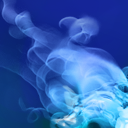 Cold Snap
Cold Snap by casting
 Invoke
Invoke while having



active.
Cold Snap can be cast on every enemy or neutral single unit. It ministuns the target on cast
and then applies further ministuns every time the target gets damaged.
Cold Snap only scales with levels in Quas.
With higher levels into it you'll get more damage per proc, longer duration of the debuff but most importantly a shorter trigger cooldown. With level 1 Quas the enemy has at least 0.37s to act, if you damage him in intervals perfectly aligned with the trigger cooldown, which you'll almost never do alone. With max level in Quas (7+1 from Aghs) this goes down to 0.17 in an optimal case. When combined with other heroes attacks or spells you can achieve enough damage instances to trigger Cold Snap as much as possible and therefore prevent enemys from casting any spell that has a longer cast time than Cold Snap allows.
It has quite a good cast range and most importantly is an (
almost, since 6.87 it is 0.05s) instant cast.
It only triggers it ministun when the target gets damaged for more than 10 damage, after reduction and does not trigger on self-inflicted damage (
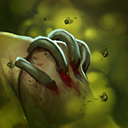 Rot
Rot for example) or damage flagged as HP Removal (
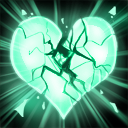 Heartstopper Aura
Heartstopper Aura for example).
Situations to cast it:
- In lane when you harras your enemy or are about to be harrassed.
Invoker has no cheap AOE spell to lasthit and damage your opponent like Lina or Puck, or an orb effect that allows you to hit another hero without drawing creep-aggro. Instead Invoker has Cold Snap to be strong in lane.
Whenever your opponent tries to righclick you, he might draw aggro from your creeps. That is the opportunity to use coldsnap as a counter harrassment in lane. With multiple units attacking, Cold Snap is almost a perma-stun and allows you to get many hits in yourself, while he barely can use a spell.
You can also use it aggressively in lane, when you know, you'll get multiple hits on your opponent, he can't get away with some kind of escape skill, or your creeps are already hitting him.
This can also be applied when ganking a solo hero that gets attacked by creeps when he is farming neutrals or pushing out a wave. Cold Snap will prevent him from doing almost anything and you can throw at him whatever you deem useful.
- To cancel TPs, other channeling spells or spells with a noticable cast time.
The instant cast and good range make Cold Snap an excellent spell to cancel things. Mind though that it is of course blocked by  Linken's Sphere and does not pierce magic immunity.
Linken's Sphere and does not pierce magic immunity.
It is also immensley useful against heroes that want to use spells that have a noticable cast time. With enough ways to tirgger Cold Snap it can prevent them from casting such spells for the entire duration of Cold Snap. The most classic examples are  Fissure or
Fissure or 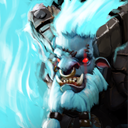 Nether Strike, but even spells like
Nether Strike, but even spells like 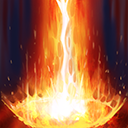 Light Strike Array,
Light Strike Array, 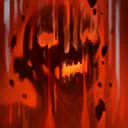 Shadowraze,
Shadowraze, 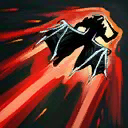 Blink or
Blink or  Ball Lightning can be prevented.
Ball Lightning can be prevented.
- As (weak) setup for other spells.
Cold Snap may only have a 0.4s stun time on cast and each time it triggers, but that max be enough to setup for other spells and hinder enemys from escaping them.
- As weak, but continous form of damage and lockdown.
While the stength of Cold Snap lies in its versatile utility, it is of course also a decent source of additional damage and a decent ability to prevent your enemy from doing anything.
Spells and items that combo good with
 Cold Snap
Cold Snap:
Good spells to combo with Cold Snap are spells that trigger it as often as possible, so DOTS that do damage in very small intervals. Alternatively Cold Snap can be used to start combos with other spells, that need at least a short amount of control as setup.
- From your own spells:
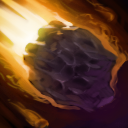 Chaos Meteor,
Chaos Meteor, 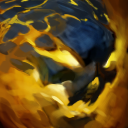 Forge Spirit,
Forge Spirit, 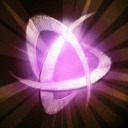 Alacrity,
Alacrity,  Ice Wall
Ice Wall
Chaos Meteor deals damage both by rolling over a target and by applying an extra DOT to them, so it is very likely to trigger Cold Snap the maximum amount.
Forged Spirits and Alacrity both combo good as they increase the number of physical attacks you can get on an enemy and therefore get more Cold Snap procs.
Ice Wall only deals damage every 1s and only deals enough damage after three levels in Quas to trigger Cold Snap, but in combination whit it's slow it provides very good control.
- A very good item to use with Cold Snap is
 Urn of Shadows. Together with your rightclicks it provides enough procs to prevent most escape spells and also a very good amount of damage on the target.
Urn of Shadows. Together with your rightclicks it provides enough procs to prevent most escape spells and also a very good amount of damage on the target.
- From other heroes every spell that is a DOT or damages enemies in fast intervals is good to combo with Cold Snap. Strong examples are
 Rot,
Rot, 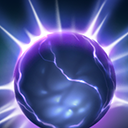 Ion Shell,
Ion Shell, 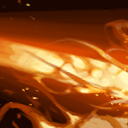 Sun Ray.
Sun Ray.
- Lastly of course every other hero just attacking an enemy helps with procing, so more the merrier.
- Cold Snap can be a good setup for your own spells like
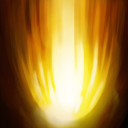 Sun Strike,
Sun Strike,  Chaos Meteor,
Chaos Meteor,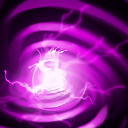 EMP.
EMP.
When trading hits with an enemy hero it might work to cast Cold Snap on him and then one of the said spells. The ministuns from Cold Snap can keep your opponent in place so the next spell hits him, making at least your trade-off very beneficial for you or might even end up killing him.
- Cold Snap as a setup for
 Tornado
Tornado
Sometimes you want to gank an enemy with Tornado into some other spells, but you are not confident to hit the tornado, because the enemy might have a high movementspeed or some kind of escape spell. In that situation it is a good combo to sneak up to him so close that you can cast Cold Snap first. The ministun will make hitting the Tornado a lot easier and will allow you to throw other spells at your target after that.
- Setup for spells of other heroes.
The ministun that Cold Snap provides can be used as a setup for many other heroes, if you communicate that to them. It can for example provide a good enough setup for a 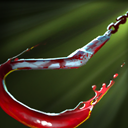 Meat Hook, a
Meat Hook, a  Light Strike Array or to trigger a
Light Strike Array or to trigger a 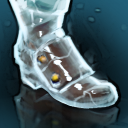 Cold Feet freeze.
Cold Feet freeze.

You obtain
 Sun Strike
Sun Strike by casting
 Invoke
Invoke while having



active.
Sunstrike is a ground cast, pure damage nuke with global cast range. It does massive damage, but is not the easiest spell to hit. The hit is delayed by 1.7s and the damage dealt is equally spread among all units hit. It does pierce magic immunity. It also gives vision over the targeted area for 5.5s upon cast.
Sunstrike only scales with Exort and simply increases the damage it deals.
Killing an enemy with Sunstrike will give you the gold and also the experience, even if you are on the other side of the map.
Assisting will only give you the assist gold, not the experience.
There are two difficulties with landing good Sunstrikes:
- The 1.7 cast delay.
While it is always a nice highlight to hit a Sunstrike somewhere on the map, the skill needed to do that is fairly simple to understand, yet hard to master. Look at their movement speed, in what direction they are moving and place it a fitting distance ahead of him.
- The damage spread.
Hitting a solo target deals 100 to 540 pure damage threatening every kind of hero at every stage of the game, but hitting some in the middle of the creep wave can result in just 20 to 100 damage, which is at most times barely annoying.
Therefore it is important to single out your targets if possible or to place your Sunstrike just on the edge of your target. This often makes it harder to hit, but rewards you with a lot of damage.
There are also two ways of sunstriking.
The first is the hard one: seeing an enemy hero somewhere on the map, with low enough HP and just hit the Sunstrike by predicting their movement.
This simply takes a lot of experience, not only with Invoker, but with Dota in general. You have to factor in where your enemy can move, wants to move, if he wants to stand still to lasthit or if he maybe runs to a rune.
The second way, having some kind of setup, is the easier one, but requires more communication. A setup for Sunstrike can be a lot of things. Any spell or item, that keeps your target stunned, unable to move or at least slowed can be used. The simple things are plain stuns, roots or things like
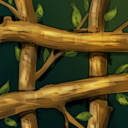 Sprout
Sprout that completely keep your target from moving. If you notice any of those spells hitting someone, be ready to cast Sunstrike on their location and BOOM, you have done a lot. The next, more difficult setup are spells or items that require you to time your Sunstrike correctly. Such things would be your own
 Tornado
Tornado, a
 Eul's Scepter of Divinity
Eul's Scepter of Divinity or a
 Astral Imprisonment
Astral Imprisonment. For those things patience and experience are needed to land a Sunstrike as casting it half a second to early might waste the cooldown and your mana. You can also land Sunstrikes quite easily on a target that has been slowed a lot. This case is similar to landing one without setup, but your target has much less options and range to move.
You have to look out for anything that disrupts such setups, be it a linkens that prevents the stun or a
 Force Staff
Force Staff that is used to move your target (
be it from an ally or enemy).
Consistently hitting Sunstrikes is a thing that requires lots of experience and confidence. You can go by
"You miss every Hook (Sunstrike), you don't throw" and you'll defenitly get better at them. Just keep in mind that it is a quite large mana investment (
at least in the early to mid game), so if you want to be also good at mana management, be sure you'll hit the Sunstrike before throwing it.
Another advice is, to never look, if your Sunstrike actually hits. You don't gain anything from that and are more likely to make a mistake wherever you're currently standing at. (
Like getting hooked by Pudge or hit by an arrow from Mirana) If it doesn't hit, you can't do anything about it and if it does you can have the
'Cool guys don't look at explosions' feeling. Just look at the map and communicate with your team, if there is a valid target, aim, shoot and immediatly look back to your own position.
Situations to cast it:
- The most obvious situation to use Sunstrike is when having a clear setup, or at least some kind of setup, where you are sure to hit your target. You'll deal massive damage and if getting a kill by doins so gain your much desired XP and gold.
- Second is the case, where you see an enemy running away on low enough HP. Now you have to concentrate, predict his movement and hopefully you'll be rewarded with a nice, fancy kill. You can look at your team if it has any spells that give you vision (like
 Rocket Flare or
Rocket Flare or 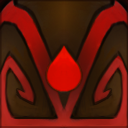 Thirst) or you can use a scan to get a better chance at hitting a difficult Sunstrike. Think about though, that the enemy might know that you have vision over him, so he might not move in a normal pattern. If that is the case, hitting a Sunstrike becomes an endless mind-game of 'I know that he knows that I know...'.
Thirst) or you can use a scan to get a better chance at hitting a difficult Sunstrike. Think about though, that the enemy might know that you have vision over him, so he might not move in a normal pattern. If that is the case, hitting a Sunstrike becomes an endless mind-game of 'I know that he knows that I know...'.
- When in a direct trade-off, in lane or in small skirmishes.
It often comes the situation where you and an opponent just hit each other, maybe because most spells are already thrown out or you are just casually trading hits in lane to harrass. In such situations a clever Sunstrike is often likely to hit, as the enemy might not expect it (because he is expecting Sunstrike only as follow-up to some kind of setup). This can easily give you the edge in such a trade and might even lead to a kill. It also takes a lot of good movement prediction, but in such surprise cases your opponent won't have too much options to go.
A good strategy is also to place the Sunstrike in a way that forces your target, if he notices the animation, to choose where to go. He is maybe either forced to run away and tank the hit, or to go deeper to dodge it. Such situations can also end up in the already mentioned kind of endless mind-game.
It is also good to keep in mind to do this while your enemy has a  Black King Bar or something similar active. Their immunity will make them most likely forget about any spell that could be thrown at them and hitting a Sunstrike in this situation can give you the advantage.
Black King Bar or something similar active. Their immunity will make them most likely forget about any spell that could be thrown at them and hitting a Sunstrike in this situation can give you the advantage.
- You can also use Sunstrike as a kind of initiation. Most players won't expect a Sunstrike without some kind of stun or slow, therefore a surprise Sunstrike can bring them low and allow you to chase them down quickly.
- When you reach a point in the game, where mana isn't a problem anymore, you can also use Sunstrike to scout things like Roshan.
Spells and items to combo with:
Every spell and item that keeps your target in place is useful to combo Sunstrike with.
- From your own arsenal:
 Tornado,
Tornado,  Ice Wall,
Ice Wall,  Cold Snap,
Cold Snap, 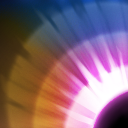 Deafening Blast,
Deafening Blast,  Chaos Meteor
Chaos Meteor
Tornado and Ice Wall are the obvious two spells. You need a decent timing, but Tornado keeps your target in place and Ice Wall with a Quas level over 3 provides a strong enough slow to easily hit your opponent.
Cold Snap can be used as a slow and weak stun, to keep your target almost in place for a Sunstrike.
Deafening Blast is a more difficult setup spell. It does disable movemnt for a short time, but also moves your enemies, so you have to factor in that forced movement.
Meteor can be used as a scare spell to lead your target into a Sunstrike. That can force your enemy to kind of choose between takeing the Sunstrike or the Meteor damage.
- Items that are good are
 Eul's Scepter of Divinity,
Eul's Scepter of Divinity,  Rod of Atos
Rod of Atos
Euls is similar to using Tornado and requires a good timing, Rods root can be one of the simplest setups you can get.
For when you're trying to make next level plays, you can also use a  Force Staff or
Force Staff or  Hurricane Pike to cast a Sunstrike and force your enemy into that position.
Hurricane Pike to cast a Sunstrike and force your enemy into that position.
- Weaker items would be
 Shiva's Guard and
Shiva's Guard and  Scythe of Vyse. Their slow can be enough setup, but is definitly no sure thing.
Scythe of Vyse. Their slow can be enough setup, but is definitly no sure thing.
- From other heroes, as said, every spell that provides some kind of setup is useful. Even channeling spells like
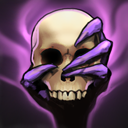 Fiend's Grip from the enemy can be used, as they're setting them self up for a Sunstrike.
Fiend's Grip from the enemy can be used, as they're setting them self up for a Sunstrike.
How to train Sunstrikes:
One the one hand you can train the timing for certain combos like
 Tornado
Tornado ->
 Sun Strike
Sun Strike,
 Eul's Scepter of Divinity
Eul's Scepter of Divinity ->
 Sun Strike
Sun Strike or
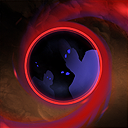 Disruption
Disruption ->
 Sun Strike
Sun Strike. For that just go into demo mode, create a tanky enemy bot and try the combo again and again. Keep in mind that enemys are likely to move the instant they get out of such a setup. When training with
 Tornado
Tornado also try to do the combo with different levels in Quas, as the time where the enemy is in the air varries according to that.
Training to hit raw Sunstrikes is quite difficult as you can rarely reproduce a scene from an actual game. It can help though to just send a bot on a long patrol and repeatedly try to hit him. Also try to vary the movement speed of the bot by giving him different boots and movement speed items. This will give you a better feeling of at least straight enemy movement at differenet movement speeds.
A short chapter about the new use of Sunstrike as Cataclysm is in the Talent chapter.
You obtain
 Forge Spirit
Forge Spirit by casting
 Invoke
Invoke while having


and

active. The order of those does not matter.
Forge Spirits summons one (
with the level 15 talent two) Forged Spirit. When casting it again the old summons get replaced. Forged Spirits have Melting Strike, a passive that reduces enemys armor by one per attack up to ten minus armor. Does not work against spell immunity.
Forge Spirits scale with both Quas and Exort. Levels in Quas increase the Forged Spirits attack range, health and their living duration. Levels in Exort increase their damage, armor and mana pool.
Forged Spirits act like any other unit you can summon with other heroes like Enigmas Demonic Conversions or Beastmaster boars. They do however become, with high levels in Quas and Exort, one of the strongest summons in the game. With up to 1000HP, 92 damage and a duration of up to 90s they can be a threat to supports even in the lategame.
Situations to use them in:
- In lane to harrass and out-lasthit your opponent.
You can send your Forge Spirit to attack your enemy, forcing him to miss lasthits or making any trade better for you, especially with it's armor reducing passive. Also you can attack creeps with Invoker and your Forge Spirit at the same time to have a strong damage advantage over your opponent.
Be carefull though on the earlier levels as the Forged Spirit doesn't have that much HP or armor and has 0% magic resistance, so it can be killed of quite easily.
- Pushing out lanes, you deem to scary to push out yourself.
As you get more levels into Quas, the Forged Spirit becomes better and better in pushing out lanes, as its duration becomes very long. Just send it with an attack command down a lane and it will slowly but surely push out that lane.
This is applicable even into the very late game.
- Farm jungle.
In every game of Dota you'll get at some point in the situation where the lanes are not that safe and you just want to kill some neutrals in the jungle. The Forged Spirits provide a good damage boost and HP buffer to sustain your jungle farm.
- Scouting.
With increasing duration the Forged Spirits become very effective at scouting. You can use it to scout runes, incoming ganks, Roshan or anything you deem interesting to scout.
Spells and items to use with:
 Cold Snap is a very strong spell in combination with your Forged Spirit, as you get more procs through the additional attacks.
Cold Snap is a very strong spell in combination with your Forged Spirit, as you get more procs through the additional attacks.- Any spell that is physical based or any basic attack at all. Forged Spirits reduce armor over the time of a fight quite significantly, so they can provide a good buff to physical attacks.
- In some situations it can be benefitial to build into armor items. There it can be strong to get a
 Medallion of Courage or later a
Medallion of Courage or later a  Assault Cuirass. Stacking armor reduction is always a strong strategy, if that's in your teams interest.
Assault Cuirass. Stacking armor reduction is always a strong strategy, if that's in your teams interest.
 Sun Strike. While it doesn't directly combo with the Forged Spirits, sometimes the opportunity comes around, where you can chase a poor support with your Forged Spirits up to the point where he gets low enough on HP so you can use Sun Strike to kill him.
Sun Strike. While it doesn't directly combo with the Forged Spirits, sometimes the opportunity comes around, where you can chase a poor support with your Forged Spirits up to the point where he gets low enough on HP so you can use Sun Strike to kill him.
There is nothing particular to train with Forged Spirits. Just keep in mind to micro them around and not let them idle.
You obtain
 Ice Wall
Ice Wall by casting
 Invoke
Invoke while having


and

active. The order of those does not matter.
Ice Wall creates a wall of ice (
duh!?) 200 units perpendicular in front of you with an effective length of 1330 units and a width of 105, which slows and damages enemies who pass it. The slow lingers for 2s after an enemy moves out of the wall.
Ice wall scales both with Quas and Exort. Quas increases the duration of the wall and the amount of movementspeed slow, Exort increases the damage it deals.
Ice Wall is (
in my opinion) Invokers most underrated spell. It's slow is one of the absolute best in the game (
with high enough levels in Quas), up to 160% and the area it covers for up to 12s is extremely versatile so it can be useful in every kind of fight, from a solo pick-off to a 5v5 teamfight.
It is though one of the hardest spells to place perfectly. It is always impressive to hit a clutch Sunstrike or a Tornado over long range, but it is even more impressive to find the perfect placement for an Ice Wall that maybe just catches a fleeing enemy or maybe wins a huge teamfight because it seperates your opponents completely and you can take them apart.
Thinking of a good placement for Ice Wall takes experience in how any kind of fight may play out and good knowledge of the size of Ice Wall. But not only finding a good place is hard, actually putting it there is difficult, as you can't just point and click your Ice Wall.
Ice Wall is created immediatly upon cast in front of you. Therefore, before casting it, you need to turn and face the correct direction, to have the wall rotated the way you want.
At this point also our beloved DotA 2 pathing can destroy your good itentions. To deal with this it can be a good trick to get the 'Directional Movement' command somewhere in your used keys (
I use for example the middle mouse button/click on mouse wheel). With this command you first turn into the direction you clicked and then begin moving towards that point, completely ignoring the pathing system.
Casting a good Ice Wall then becomes a process of:
- Thinking of the spell.
Don't forget it because there may be Sun Strike with more damage or Tornado, an actual disable. It is a very heavy slow, that can be used over quite a long distance, if used perfectly.
- Think of a placement.
You have 180 to choose from (excluding mirroring) and depending on the situation, there can be multiple good spots, for different purposes.
- Walk there and turn so you will get the placement you want.
This can be done via the 'Directional move' or with a normal movement command close to your own position, so pathing doesn't thwart your plan.
- Cast Ice Wall.
Be happy you just placed a very cool spell.
- Follow up with something from your spells or from your team, as Ice Wall alone does not to great damage.
Situations to use it in:
- In lane, to punish bad positioning.
This is a rather difficult case, but can be very rewarding. When you notice your opponent is too far out of his save space, you can try to catch him with an Ice Wall, that prevents him from going back and thereby force him to fight in an disadvantagous position.
To do this it is useful to try to turn about 90 from your enemy and catch him with the far end of the Ice Wall. Otherwise you'd have to walk up very close to him, which he obviously wouln't want to happen anyway and will also leave you probably in an unfortunate position. If hit by it, you then can follow up with attacks, spells or can use it as a initiation for a gank.
- Ganking a solo hero.
Ice Wall can be a great ganking tool against heroes that don't have an escape spell and rely on walking away. Getting in range for a good positioned Ice Wall allows to follow up with many attacks and spells from you and your allies. In cases where the target doesn't have a particular escape spell it can be far better than a traditional stun, as it last very long. Even with just four levels in Quas you'll have 7.5s of slow.
It even can be useful in the case of ganking an heroe that has an ability to become invisible. If you catch him in an Ice Wall and your team has some AOE spells, the invisibility won't help, as you can be sure to land your spells even after he tries to get away.
- Smaller skirmishes.
When facing two or three opponents in a small fight, there are three options on how to place your wall.
The first incentive would simply be hitting as many enemies as possible. If you stand versus two heroes you can try to line them up and hit both with the Ice Wall. If you are against more, try to focus on either the important ones, an immobile carry, a slow but important support, or on the ones that can't escape the wall, for example not on someone with  Black King Bar, Omni Knights
Black King Bar, Omni Knights  Repel or Storm Spirit as he doesn't care about slows..
Repel or Storm Spirit as he doesn't care about slows..
The second is to focus on the important target and block its most likely path. If one target is of less importance, you can focus to cripple the other one as much as possible and position your Ice Wall in a way so they are forced to either go through the wall for a long time, or choose an even worse path (into your tower maybe). That way you'll maximise the impact even more.
A third idea would be to, hit at least one enemy, but also try to block a path, from which they might get backup from. A good example would be when fighting near an enemy shrine and you can place your Ice Wall in a way that lies between your current target and the shrine. Heroes TPing to that shrine will have a hard time getting to their ally and will eventually be forced to leave him alone.
- Large teamfights.
There will be countless good opportunities to place Ice Walls in a larger teamfight. Still there will be better ones and worse ones.
The first idea from the last bulletin point still stands of course. The more slowed, the merrier your team. Also the same type of focus should usually apply. Keep in mind though that, as larger teamfights usually happen later into the game, your Ice Wall will surely last longer than most means of magic immunity. Maybe you find a good placement on an enemy that has BKB active. Don't immediatly disregard the idea, because of the BKB, but try to predict where he wants to move and place your wall in a way that when the BKB ends, he'll be in the Ice Wall and then in quite the predicament.
Other than that it is important to predict, where the fight is gonna move. Maybe the enemy team comes in two groups then it can be good to figure out the easier group and with a good Ice Wall, keep them from combining their forces. Maybe the enemy slowly pushes you towards your own shrine. At some point they might go too far and an Ice Wall blocking their retreat path forces them to fight under the protection of your shrine.
It also is extremly useful to kite tanky, but slow heroes for ages. Heroes like  Bristleback,
Bristleback,  Dragon Knight,
Dragon Knight,  Abaddon will have massive problems to do anything useful in a fight, when caught in an Ice Wall without a way of getting out.
Abaddon will have massive problems to do anything useful in a fight, when caught in an Ice Wall without a way of getting out.  Tidehunter also should get a special mention, as Ice Wall is particular strong against him, because it is a slow he can't dispell with his
Tidehunter also should get a special mention, as Ice Wall is particular strong against him, because it is a slow he can't dispell with his 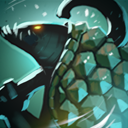 Kraken Shell.
Kraken Shell.
Finding good placements in any type of teamfight takes extremly good positioning work, due to Ice Walls difficult placement mechanic and a lot of experience in DotA in general, to predict fights well.
- Chasing lone heroes.
Similar to using it in lane or in a gank. Run at your target, if you are close enough, quickly turn and catch your opponent at the edge of the wall.
Ice Wall may be not the best chasing spell becaus of its range and placing techinque, but it still can be used as such.
- Securing an escape.
When escaping form enemy heroes, Ice Wall is very strong at keep your persuers from chasing you. Often it is enough to just cast it, without turning, while running. This creates a barrier your opponets will have to walk around or prematurely use a catch up spell to get over it. On some paths it might come in handy though to think about a short turn, to place the wall along a narrow path. On a plain field this would allow the enemy to manouver around it more easily, but in a narrow passage, it prolongs the time they had to go through the wall massively.
- As a preemptive block.
You can also use it in some cases, preferably with quite high levels in Quas for a longer duration, to preemptivly block a passage, you assume your enemy wants to go through. Ideas would be when your team is killing Roshan and you fear the other team might come to interupt you, you can place an Ice Wall the path from where you expect your enemy to come, or when you have the high ground and expect the enemy team to try to come to you there, you can already lay down an Ice Wall they cannot see yet, but get stuck in when trying to go uphill.
- Preventing an enemies escape.
Ice Wall is also greatly useful in the case where a enemy tries to escape by spells that hide him, like  Astral Imprisonment or respawning with the Aegis. You can simply place a wall beneath their hidden location and they will have great problems escaping from it.
Astral Imprisonment or respawning with the Aegis. You can simply place a wall beneath their hidden location and they will have great problems escaping from it.
Spells and items to combo with:
- Ice Wall as a setup or initiation.
With it's massive AOE slow, Ice Wall is useful as setup for many hard to time or hard to position spells or time intensive manouvers from your team.
From your own spells it is great to setup  Sun Strike,
Sun Strike,  Chaos Meteor,
Chaos Meteor,  EMP. Other heroes spells that are especially strong when having this kind of setup are Leshraks
EMP. Other heroes spells that are especially strong when having this kind of setup are Leshraks 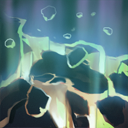 Split Earth, Linas
Split Earth, Linas  Light Strike Array, Crystal Maidens
Light Strike Array, Crystal Maidens  Freezing Field or if you have two or more heroes caught Lichs
Freezing Field or if you have two or more heroes caught Lichs 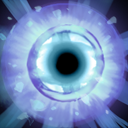 Chain Frost.
Chain Frost.
Basically every spell that gets stronger when the enemy can't move or requires a setup is a very good combo.
It also allows you of course to get multiple attacks on your target so everyone that wants to rightlick has more time to do so. This also makes your spells  Alacrity,
Alacrity,  Cold Snap and
Cold Snap and  Forge Spirit a strong combination with Ice Wall.
Forge Spirit a strong combination with Ice Wall.
- Ice Wall as a follow up spell.
Ice Wall can be a very powerfull spell, but you'll have difficulties placing it perfectly. Therefore spells and items that allow you to do so are great combos to Ice Wall.
From your own arsenal  Tornado let's you cast a wall diretly beneath your target,
Tornado let's you cast a wall diretly beneath your target,  Cold Snap makes it easier to catch up to someone and get in range to place a good Ice Wall, even the short forced movement from
Cold Snap makes it easier to catch up to someone and get in range to place a good Ice Wall, even the short forced movement from  Deafening Blast can be enough to cast a decent Ice Wall.
Deafening Blast can be enough to cast a decent Ice Wall.
From other heroes every spell that stuns, slows, blocks the enemys movement or displaces them advantageous can be enough of a setup for a good Ice Wall.
The same rule applies to item. Useful are  Eul's Scepter of Divinity, functioning similar to
Eul's Scepter of Divinity, functioning similar to  Tornado and
Tornado and  Rod of Atos as strong setups and slows from
Rod of Atos as strong setups and slows from  Scythe of Vyse,
Scythe of Vyse,  Shiva's Guard. You can also get tricky with
Shiva's Guard. You can also get tricky with  Force Staff and
Force Staff and  Hurricane Pike to either get in a better position yourself or force your enemy into a bad one.
Hurricane Pike to either get in a better position yourself or force your enemy into a bad one.
It also makes landing Ice Walls easier when you have a high amount of movementspeed, so items like  Phase Boots or
Phase Boots or  Drum of Endurance are also useful in that aspect.
Drum of Endurance are also useful in that aspect.
Training Ice Wall:
Ice Wall is indeed a spell that can be rewarding to train. The simple setup to train it is to load up a empty lobby or the demo mode, let a bot go on patrol on various paths and try to land an Ice Wall from as many angles and distances as possible. Also try to place walls across hills, so you get accustomed to situations where pathing makes your task difficult.
Especially try to focus on getting used to the process of running straight at a target and then quickly turning a bit to catch them from further range.
You obtain
 Alacrity
Alacrity by casting
 Invoke
Invoke while having


and

active. The order of those does not matter.
You can cast Alacrity on yourself or any allied unit. It will give the target added attack damage and attack speed.
Alcrity scales with both Wex and Exort, Wex increasing the bonus attack speed, Exort increasing the bonus attack damage.
Situations to use it in:
- In lane to out lasthit and out trade your opponent.
Alacrity gives you a massive boost in attack damage. It also not to mana intensive, so just an occassional Clarity, a Ring of Basilius or a Crystal Maiden on the team is enough to use it a lot.
Use it when you are about to lasthit or deny some creeps or when you are about to trade hits with your enemy.
- To farm jungle, farm elsewhere or to push out lanes. The bonus damage and attack speed speed up your substantialy.
- Any kind of fight, were you will be rightclicking a lot.
Although Invoker always wants to cast as many spells as possible, but he also is able to deal massive amounts of physical damage with his basic attacks, especially if buffed by Alacrity.
- When you have a carry in your range, that is or is about to attack your enemy.
Remember, you can cast Alacrity on allies. Sometimes that will be the better choice. Especially in late game scenarios, the bonus attack speed can make carries like Luna, Medusa kill everyone in seconds.
- Pushing enemy structures.
With Alacrity Invoker is able to push enemy towers very quickly, so keep in mind that fighting may not always be the optimal option and you can be very well be better off quickly pushing a tower instead.
A good trick for pushing extra quickly is to cast Alacrity on your catapults, whenever you have one. Catapults do siege damage, which does 250% damage to buildings as opposed to heroes who do only 50% do structures. The bonus damage Alacrity gives then also does siege damage, therefore a catapult with Alacrity effectively deals a lot more damage than a hero buffed with it.
Spells and items to combo it with:
- From your own spells
 Cold Snap and
Cold Snap and  Ice Wall are great spells to use with Alacrity as they allow you to get more of your buffed up attacks out.
Ice Wall are great spells to use with Alacrity as they allow you to get more of your buffed up attacks out.
 Deafening Blast together with Alacrity also lets you manfight nearly every enemy, as you can disarm them with the blast and out damage them with Alacrity.
Deafening Blast together with Alacrity also lets you manfight nearly every enemy, as you can disarm them with the blast and out damage them with Alacrity.- Minus armor items and spells such as
 Medallion of Courage or
Medallion of Courage or 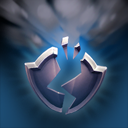 Corrosive Haze work great when using Alacrity to furthe increase your damage output.
Corrosive Haze work great when using Alacrity to furthe increase your damage output.
- Any other spell that buffs up your damage or allows you, or your buffed ally to get more hits out.
You obtain
 Tornado
Tornado by casting
 Invoke
Invoke while having


and

active. The order of those does not matter.
Tornado is a ground cast ability that creates a tornado at your location that moves quickly in the direction of your cast. When it hits enemy units it cyclones them, making them invulnerable and untargetable for the durarion and then damages then as they fall back on the ground. It also applies a basic dispel on every affected unit.
Torando scales with both Quas and Wex, Quas increasing the duration enemies get lifted up, Wex increasing the distance the tornado travels as well as the damage it deals.
Tornado is one of Invokers most iconic spells. It is one of the core spells that allows him to unleash various strong combos. It can act as setup, chase, raw damage, interrupt, save... With increasing levels in Wex, Tornado gets a ridiculous range, up to effectively 3800 units. With a width/radius of only 200 it can be quite a hard spell to land though. A good Tornado can be a setup for a very strong teamfight, but as the cyclone mechanic makes all hit units invulnerable it has to be used with care and good communication, as it can also destroy an entire teamfight.
Tornado is one of Invokers more simple spells to use, so it may always be one of the first that comes to mind, when you think about invoking another spell. BUT it can also often save your enemy if used incorrectly. Therefore always think good about, if the Tornado is actually needed. When you are alone, it is very rare that it is bad to use it, but if you have at least one teammate fighting with you, you have to consider carefully if you're not destroying some combo with it. There are few more things that make you dislike your teams Invoker, than when he destroys a beautiful combo of
 Chronosphere
Chronosphere,
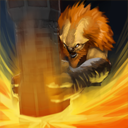 Echo Slam
Echo Slam or just things like Miranas
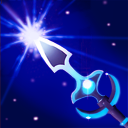 Sacred Arrow
Sacred Arrow.
Situations to use it in:
- As a setup for any spell.
The huge range and rather quick travel speed makes Tornado an excellent initiation spell. While hit opponents are in the air, you and your team can move towards them and use spells that require a setup or the enemy to be badly positioned.
- As an interrupt for TPs or channeled spells.
Again the huge range and speed makes Tornado great at canceling TPs or spells like 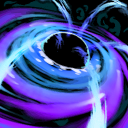 Black Hole from a huge distance.
Black Hole from a huge distance.
- Disrupting a teamfight.
Tornado can perfectly act as a counterinitiation or general disruption of a teamfight that destroys your enemys teamfight coordination.
It just has to be used carefully as it can also make your teams spells useless, so keep up a good communication.
- Chasing a down a fleeing hero.
If you correctly predict your targets movement, Tornado can be used to chase down enemies from a ridiculous range. It can be sidesteped quite easily so try to use it in positions where they are forced to chooss between the tornado or an even worse path like walking back into your team.
- Using it for raw damage.
Especially in the early mid-game the actual damage of Tornado is often undervalued. While clearly beeing one of your damagewise weaker spells, it still deals up to 360 magic damage. This often can be used to finish off low HP targets. It also is useful against very evasive heroes, as the damage can only evaded by instantly activating BKB while they're falling down from the cyclone and with an effect radius of 200 units it can't be evaded by spells like 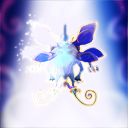 Phase Shift or
Phase Shift or  Disruption.
Disruption.
- To push out lanes from afar.
When you come to a point in the game, where mana is no problem anymore, Torando can be very effectively used to push out lanes over its huge range. Especially in lategame where your intelligence increases your spell damage quite a bit, it may not one-shot a creep wave, but it damages it severly so it will be pushed out by your teams creeps. Also with the level 25 talent (-16s tornado cooldown) you can keep out every enemy creeps that comes in sight with it, without ever worrying about the cooldown.
This comes also in very handy when defending your base, as you can constantly nuke the enemy creeps and slowly harrass them down, without any risk to yourself.
- Purge your enemies.
An often overlooked feature of the Tornado is that it also is a weak dispell on enemy units.
Therefore it can be used to purge AOE buffs from them. Two great examples are Omni Knights 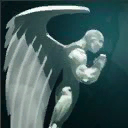 Guardian Angel and Ember Spirits
Guardian Angel and Ember Spirits 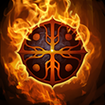 Flame Guard This is also useful against enemies with powerfull runes active, such as
Flame Guard This is also useful against enemies with powerfull runes active, such as  Rune of Double Damage and
Rune of Double Damage and  Rune of Haste. It can often be a great surprise to them, when they think they have an advantage with that rune and try to fight, but will find themself in a very bad situation after Tornado purges their rune away.
Rune of Haste. It can often be a great surprise to them, when they think they have an advantage with that rune and try to fight, but will find themself in a very bad situation after Tornado purges their rune away.
Spells to combo with:
- Tornado can be a great setup for your spells
 Sun Strike,
Sun Strike,  Chaos Meteor,
Chaos Meteor,  EMP and
EMP and  Ice Wall.
Ice Wall.
To combo it with Sun Strike directly, it is necessary to be very familiar with the timing, because the lift-time changes with different Quas levels.
- Other heroes spells that require setup.
Common examples are  Split Earth or
Split Earth or  Ice Path, but it can also provide time for better thought out
Ice Path, but it can also provide time for better thought out  Fissure or
Fissure or  Black Hole.
Black Hole.
 Meteor Hammer
Meteor Hammer
As I recently witnnessed in a professional game (by 5ANCs Toppson) a high-quas + Talent Tornado can be used as somewhat reliable setup for the Meme-hammer to both have longer lockdown and quite significant damage.
Tornado isn't a spell that requires much training, but is good to get familiar with the range and speed of it. To do that just go into a lobby with some bots, cheatyourself to level 25, get 6-slotted (important items would be
 Aghanim's Scepter
Aghanim's Scepter and
 Octarine Core
Octarine Core), choose the -16s cooldown for Tornado and try to kill bots just with your Tornado. Do that from every kind of angle and distance and you'll get accustomed to the spell really good.
(
You can train combos of Tornado into something like Sun Strike with this together of course)
In addition to that Tornado also requires some prediction skills for your opponents movement, but this is a skill that mostly requires experience in DotA in general.
You obtain
 EMP
EMP by casting
 Invoke
Invoke while having



active. The order of those does not matter.
EMP is a ground cast ability that will an a quite large area create an electrical explosion that detonates after 2.9s that burns mana of all affected enemies, damages them for 60% of the drained mana and will give you half of the mana you burned of your enemies.
EMP only scales with Wex, increasing the mana it burns and therefore also the potential damage and mana gained from it.
Situations to use it in:
- In the lane.
When going for a Wex-based build, EMP can be effectively used to harras enemies that don't have a way to quickly get out of the AOE. This should especially be done against heroes, that rely on their spells to lane and lasthit, such as  Storm Spirit,
Storm Spirit,  Zeus or
Zeus or  Skywrath Mage.
Skywrath Mage.
It is realy effective only when having at least three levels in Wex, as hitting an EMP on a single hero will restore the full mana you spend, but if you are sure your EMP will hit, maybe through a gank that slows your opponent or just bad positioning from him, it can severly weaken your enemies lane-presence. Pulling this off two or three times can easily turn a lane, that you are supposed to lose, in a win for you.
- In every fight otherwise.
After you have level three in Wex, it is always good to cast EMP in teamfight. If you hit more than one target you'll get more mana out of the cast then you invested and also drain the enemies teams mana substantialy.
It is by not your best damage spell though. Even on max level it will only damage for up to 312 points. So if you have enough mana, prefer other spells to deal damage, but if you only have mana left for one or two spells, use an EMP and you might get out more spells after that.
Also be aware of your enemies mana statuses. EMP won't deal damage, if they don't have any mana already.
Try to hit your EMP on targets that either have enough mana to deal your full damage, or you want to drain of their mana completely to make them unable to cast any dangerous spells.
Category one contains most inteligence heroes and heroes that build big int-based items, such as  Shiva's Guard.
Shiva's Guard.
Second category are most strength and agility heroes that have some important, but mana intense spells. Good examples for that are  Tidehunter,
Tidehunter,  Chaos Knight or
Chaos Knight or  Faceless Void. Also special mentions for
Faceless Void. Also special mentions for  Medusa as she will effectively take double the damage because of her
Medusa as she will effectively take double the damage because of her  Mana Shield and
Mana Shield and  Wraith King, who can rarely make use of his
Wraith King, who can rarely make use of his 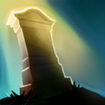 Reincarnation when hit by a higher level EMP.
Reincarnation when hit by a higher level EMP.
Spells and items to combo with:
The 2.9s delay on EMPs effect makes every setup spell or item a good combo.
- From your arsenal that would be
 Tornado,
Tornado,  Cold Snap and
Cold Snap and  Ice Wall
Ice Wall
Cold Snap and Ice Wall are very simple combos, as you can cast your EMP on top of someone, then coldsnap them, or cast EMP on a target trapped in an Ice Wall, and you'll be sure to hit them.
With Tornado you have to be a bit carefull, because of its varying cyclone timings. Up to level five of Quas, you can cast EMP and quickly after tornado your targets. After that I advise to cast EMP after hitting enemies with Tornado. Otherwise it often happens that you cast EMP and Tornado quickly one after another, but it will take the Tornado some time to acutally hit and then might prevent your EMP from hitting.
- From other heroes, of course everything that assures you hit your target after the delay, is a good spell to combo up with.
- Same goes for items. So the usual suspects
 Eul's Scepter of Divinity and
Eul's Scepter of Divinity and  Rod of Atos can be used. With the large AOE of EMP also items that slow such as
Rod of Atos can be used. With the large AOE of EMP also items that slow such as  Shiva's Guard and
Shiva's Guard and  Eye of Skadi can be enough to assure EMP hits.
Eye of Skadi can be enough to assure EMP hits.
Training EMP:
There is not much to train with this spell. It is just important to get used to the cast and effect range.
Also try to not always use EMP centred on your single target, but try to predict his path and make it therefore more likely that he can't outrun the delay.
To train EMP you rather have to train timings with combos for it, such with Tornado or Euls.
You obtain
 Chaos Meteor
Chaos Meteor by casting
 Invoke
Invoke while having


and

active. The order of those does not matter.
Chaos Meteor is a ground-cast ability that creates a meteor, that lands at the cast point after 1.3s delay. It deals damage when rolling over enemies and also ignites units it touches for a 3s DOT.
Meteor scales with both Wex and Exort. Wex increases the distance the meteor rolls after landing, Exort increases the damage it does.
Chaos Meteor is your strongest AOE damage skill. In theory it can deal up to 3168 damage (before reductions), if a unit would be affected for the entire duration of the meteor. With increasing levels in Wex it also covers a huge, 275 wide and up to 1520 long area.
Chaos Meteor is a pretty simple spell, you cast it at a point and if something is there, it won't be afterwards. Still there are two things to optimise about it's use:
- The direction
This should be pretty obvious. The meteor rolls in a straight line, so you should aim it in a way that this line aligns with the path your enemy is taking. This can be either the case when your target is forced to move that way with certain spells, or he is in a chokepoint, where he has no other option.
Keeping your enemy directly under the meteor is quite important, as the roll-over damage is the by far bigger part of its damage. (Over five times as much as the burn damage)
- Landing point
The more advanced part is about the landing point of the meteor. The meteor will land centred on the cast point. This means, if you cast the meteor diretly on your target, you will miss out on at least three instances of its main damage (which is at max Exort over 400 damage).
So to maximise the damage from meteor, cast your target around 140 units in front of it. //TODO: Insert gifs.
Situations to use it in:
- In every fight where you want to deal magical damage.
Because of the 1.3s delay a setup spell can be useful, but even without it, you will get good damage from this spell.
On a single target Sun Strike can be more effective, but as long as you are facing more than one enemy, Chaos Meteor is the spell to go.
Just keep the meteors movement in mind and try to place your Chaos Meteor in a way that will hit as many units as possible.
- Pushing out a lane.
When you enter the late game and have enough mana, Chaos Meteor also can be used very effectively to nuke down creep waves.
- Scaring your enemy.
When going a Wex-based build, Chaos Meteor will not deal that much damage in the early to mid game. It will roll very far though and every enemy will still carefully consider crossing paths with that meteor, so eventually on some occasions this can be enough to case some moments of insecurity among your foes that will give your team the opportunity to win a fight.
- Blocking paths.
When you fleeing from the enemy team, or are about to finish Roshan with your team, it can also be a quite effective trick, to just throw your meteor in the direction you expect the enemy team to come from. If they go through this spell, they will be either weakened from its damage, or don't want to do it as they have been weakened before (from the lost teamfight you may be fleeing from). This can create a lot of space for you to go for your next objectives.
- Special case of getting chased.
A very niche situation can come up, when you are fleeing and the persuers are already ontop of you. In this case it can be a cool trick, to cast the meteor in the direction you want to move to and then run under the rolling meteor. If the enemy still wants to chase you down, they'll be forced to go through your meteor and can discourage enemies from further persueing you, or at least create opportunities to get revenge kills through the damage they'll be taking.

You obtain
 Deafening Blast
Deafening Blast by casting
 Invoke
Invoke while having



active. The order of those does not matter.
Deafening Blast will create a shockwave that moves quickly towrads the casted direction. The blast damages, disarms and knock back units. The knockback is a forced movement that does not disable enemies, so they can still cast spells, use items and won't get disrupted from channeling something.
The blast scales with all three of Invokers orbs. Quas increases the knockback distance and duration, Wex increases the disarm duration and Exort increases the damage the wave does.
When choosing the AoE Deafening Blast talent at level 25, upon cast 12 of the normal blasts will be released. One in the direction of the cast and 11 more, with 30 angles between them. Every unit can only be affected once from a blast, so directly casting the AOE blast on top of an enemy will not result in a multiplied damage done.
When casting Deafening blast you can have three intentions: Dealing damage, disarming and moving them. Damage and disarm are pretty simple cases, as they get applied to your target, no matter how you hit them with the blast. Moving you enemy with the blast can be a bit fidgety though.
The direction in which the forced movement is applied depends on how you hit your enemy with the blast. If you hit them with the center of the blast, you will move them in a straight line in the direction of your original cast. If you hit them with the side ends of it though, you push them to the side. There can even be cases, when you hit them as they fall down from your Tornado or your Euls, where a target gets hit, but the center of the wave is already past them. This will result in them getting pushed towards you. This can be difficult to manage, but can also result in very creative uses of this spell.
Situations to use it in:
- Dealing damage.
This is the most simple use of this spell. It can deal damage quickly over a quite large area.
Keep in mind though that its damage is marginal (320 at the highest level in Exort) and it needs a LOT of mana, 300. Therefore think carefully, if you realy want to use the spell, just to deal damage.
If you are sure, then the spell can be great at finishing off fleeing enemies, as it is too fast for most heroes to dodge and also of course in bigger teamfights when you can hit multiple enemies.
- Disarming your enemies.
When you get more levels in Wex, this spell can be a massive problem for any physical damage carry with its disarm of up to 6.5s. The AOE also makes it particularly useful when dealing with illusion based heroes such as  Phantom Lancer or
Phantom Lancer or  Chaos Knight and also of course versus
Chaos Knight and also of course versus  Meepo.
Meepo.
Also the disarm can only be dispelled by spell immunity making purge items or such as  Manta Style useless against it.
Manta Style useless against it.
Disarming can be of course used both aggressively and defensively. In a larger teamfight it can either force the enemy team to activate BKBs or to just not attack for a good amount of time. When running away it can also be great against heroes that have attacks that slow you down.
It can also be used in direct 1v1 situations where you both rely on your rightclicks. Disarming your opponent in such a situations can easily win the engagement.
- Reposition your enemies.
This part of the spell makes Deafening Blast also a decent setup spell. When you're familiar with the way the blast moves enemies, it can be very creatively used to move your opponents into are along disadvantageous situations.
This allows you to either greatly combo position reliant spells or just for instance move targets up or down a cliff.
- When having the according level 25 talent.
If you choose this talent, you can be far more freely with your positioning for the blast, as you will get the effect (most importantly by then probably the disarm) and everyone in a 1000 radius around you, without aiming at all.
This can greatly increase the number of uses, depending on the kind of teamfight you want and also depending on the type of Invoker you play.
You can for example then use the AOE blast as an initiation spell, blink in the midst of the enemy team and use it to split them up. This would require a  Blink Dagger and most likely a
Blink Dagger and most likely a  Black King Bar to get in and also survive this position, but can be an great option, if your team is lacking in such big AOE initiation.
Black King Bar to get in and also survive this position, but can be an great option, if your team is lacking in such big AOE initiation.
You also can use flanking positions far better, as you'll still hit all relevant targets. This would be the case for a more backline, damage dealing orientated Invoker build.
Items and spells to combo with:
- From your own arsenal great spells are
 Chaos Meteor,
Chaos Meteor,  Cold Snap,
Cold Snap,  Ice Wall,
Ice Wall,  Forge Spirits +
Forge Spirits +  Alacrity,
Alacrity,  Sun Strike,
Sun Strike,  EMP, so pretty much everything.
EMP, so pretty much everything.
EMP and Sun Strike benefit greatly from Deafening Blasts repositioning properties. It can be used to keep or force them into either of the two.
A great use of the blast is also to keep your enemies trapped within an Ice Wall for a very long time by pushing back into it as they try to leave the wall.
Together with the disarm from blast and your physical damage dealing spells, Alacrity and Forged Spirits, you can manfight nearly every hero in the game.
The most iconic combo of course is together with the Chaos Meteor. The blast is perfectly to push your enemies alongside the rolling meteor and so deal massive amounts of damage from its overroll damage.
- From other heroes, every spell that benefits from the repositioning or setup properties of the spell is great.
You can for example push people that were closely missed by spells like  Chronosphere or
Chronosphere or  Black Hole back into them, or in smaller cases keep them in their intended position for spells like
Black Hole back into them, or in smaller cases keep them in their intended position for spells like  Light Strike Array and
Light Strike Array and  Split Earth. You can also move heroes over to the other side of a
Split Earth. You can also move heroes over to the other side of a  Fissure.
Fissure.
The limits are just with your imagination in this case. (And also your team composition)
Just keep in mind that you can also destroy the good setup of your friends, as you can of course also push enemies out of mentioned spells.
 Tornado and
Tornado and  Eul's Scepter of Divinity can have a certain special combo effect with the blast.
Eul's Scepter of Divinity can have a certain special combo effect with the blast.
When hitting enemies that come out of the cyclone from those two options (or in fact also Brewmasters Storm-brewlings 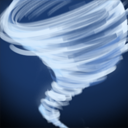 Cyclone spell, but the occasion is exremely rare) you are theoretical able, with the right timing, to push your target in any direction you want, full 360 to chooose from. For this sadly a quite perfect timing is required as you need to time your blast to be just a bit (around 150 units) behind the landing point of your cycloned target, when it hits the ground. This may be useful just in some very rare cases, but it certainly can be quite impressive to pull off, if such a situation is recognized.
Cyclone spell, but the occasion is exremely rare) you are theoretical able, with the right timing, to push your target in any direction you want, full 360 to chooose from. For this sadly a quite perfect timing is required as you need to time your blast to be just a bit (around 150 units) behind the landing point of your cycloned target, when it hits the ground. This may be useful just in some very rare cases, but it certainly can be quite impressive to pull off, if such a situation is recognized.
One example could be an enemy standing right on the edge of a cliff, (on top or on the lower part, importantly on your opposing side). You can then tornado the target, perfectly time your Deafening Blast and push them over the edge towards yourself and put them unexpectedly far out of position. //TODO: Insert gif.
This is not a case you should waste a lot of time training though. It's mostly just a show-off move. ;D
Training Deafening Blast:
For the damage dealing and disarming part of the spell not much training is required, just the usual getting comfortable with the spell.
To be pull of more advanced tricks with moving enemies though it can be certainly rewarding to try around in demo mode with unlimited spells and some bots to shoot at. This way you can get more familiar with the way the blast moves someone when hit with the center, the near side or the far end of the blast.
To eventually show off you can also train the timing of a Torando into a back-moving blast, but it is usually not worth the time.
You obtain
 Ghost Walk
Ghost Walk by casting
 Invoke
Invoke while having


and

active. The order of those does not matter.
Casting Ghost Walk immediatly (
actual 0s cast time, unlike his other spells that have 0.05s cast time) turn you invisible. You'll lose the invisibiliity if you cast any spell or use any item. Ghost Walk applies a movement speed change to yourself, -30% on level one Wex to +40% on level 8 (7+1 from Aghs). It also applies a movement speed slow to enemy units in an area around you.
Ghost Walk scales with both Quas and Wex, Quas increasing the movementspeed slow to enemies around you, Wex bettering the selfinflicted movement speed change.
It can be cast while TPing.
It is important to watch your movement while in Ghost Walk. The enemy can see and feel the effect of the AOE slow and therefore easily guess where you are, even if you are invisible.
Situations to use it in:
- As an escape mechanism.
Ghost Walk is Invokers goto tool to escape any incoming threat. With few levels in Wex it will slow you down and your only benefit will be the invisibility, so be wairy of enemy detection. With increasing levels in Wex though (four levels and upwards) it will give you also a strong movement speed bonus, so you can also go into Ghost Walk to gain a temp advantage over your enemies, even if they have detection to see you.
The AOE slow part also makes it that if someone is actually catching up to you, they'll get behind again with the 2s lingering slow.
Also remember that you can use it while channeling a TP, so don't always Ghost Walk run to a save position and then TP, but if you are confident, the enemy has no way of revealing you, you can use the TP and only if you see something threatening incoming use Ghost Walk.
- To quickly roam the map.
When playing a Wex-based build or in the lategame, you can search the map with Ghost Walk. You'll have an incredibly movementspeed and can quickly scout the map and if the occasion is there, quickly gank someone.
- Helping a teammate in peril.
There can arise the situation that you escaped an ambush by getting into Ghost Walk and the enemy lacking detection. Eventually though there can be allies that are alose cought by the gank and don't have such an escape spell. Then AOE slow can be used to walk near the chasing enemies and give your ally the chance to outrun them.
It is important to look out for anything that can suddenly give your enemy ways to reveal you. If something for that seems to be incoming it should be the time to abandon your mate and rescue yourself.
- When TPing in as backup.
Sometimes when coming in as a backup via TP to a tower, it can be a neat trick to use Ghost Walk during the TP. That way for the opposing team it might look like you have canceled your TP, as you'll be invisible as soon as the TP effect ends. This can eventually bait out some advantagous situations.
- In late game to quickly move somewhere.
In the late game, when mana and cooldowns are no problem any more, you can use Ghost Walk to be faster in getting to place where you're needed but that has no tower nearby.
Spells and items to combo with:
- When using it agressively, spells and items that quickly burst down a target are of use, if you play an assassin like build.
- Defensively items are great that can purge dust from you, so most importantly
 Eul's Scepter of Divinity and
Eul's Scepter of Divinity and  Lotus Orb.
Lotus Orb.
The only thing to train about Ghost Walk is the AOE of its slow effect. If you get used to the range, you'll be able to manouver around your enemies, truly without them noticing you.
Talents
At last a short chapter about how to choose your talents.
Level 10: +30 Meteor Damage vs 0.3s Tornado lift duration.
With the change in 7.07 this talent is not much of a choice. The meteor talent equals roughly 2 levels in
 Exort
Exort, the tornado talent exactly 1 level in
 Quas
Quas. In most cases you'll want to wait to get this talent up to level 14 to get the subsequent talent. Sometimes it can be a decent upgrade in damage, if you're playing aggressive and get a lot of kills with something into Meteor combos, but other most of the time, the actual skill point has more value.
The tornado talent is very underwhelming and you'll probably never want to pick it up. The only usefull case I can see it having impact is, if you're going for a no-talent build, where you leave all talents for the levels 21-25, get the Tornado cooldown talent at level 25 and are in a game where you are far behind and you need to waste as much time of the enemy team as you can. Pretty rare conditions, don't pick this talent in general.
One case for the tornado talent has recently been made, in a combo with the Meteor Hammer. A rather odd build, but for that this talent is rather vital.
Level 15: +1.5s Coldsnap duration vs +1 Forged Spirit summoned
Also not much of a choice, the Coldsnap duration equals 1 point in
 Quas
Quas, adding not much to an already very long lasting, dispellable spell, so it's not realy worth to get in any situation.
The additional Forged Spirit on the other hand is, even though it is at this rather late level (compared to the level 8 you could have them pre-7.00), very usefull. Better splitpush, better scouting, better farm, better at annyoing supports.
Level 20: 35 AS/AD for Alacrity vs Cataclysm
Now the talents are becoming an actual choice.
The additional attack speed and damage for Alacrity is quite significant, equal to roughly 2 and third levels in
 Wex
Wex and
 Exort
Exort and decently boosts your or your allieds damage output.
The Cataclysm on the other hand is a very odd, yet interesting addition to Invokers kit (also quite funny).
Excurse:

Cataclysm
With this talent you get the option to alter your usual
 Sun Strike
Sun Strike to the ability Cataclysm. To cast Cataclysm use
 Sun Strike
Sun Strike on yourself by either targeting your hero, double tapping it or by holding ALT down, if you have either option activated.
Upon cast you will then cast two Sunstrikes, that are visible to the enemy, next to every enemy hero. Sunstrike will than be put on a 90s cooldown.
If the enemies are standing still you'll most of the hit them with neither of the Sunstrikes, sometimes with one and with a nearly impossible chance both, so the damage output when randomling doing this is very low.
When the enemies are clumped up however (through e.g.
 Black Hole
Black Hole,
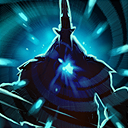 Reverse Polarity
Reverse Polarity,
 Vacuum
Vacuum) or just stunned by big AOE abilities (like
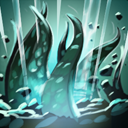 Ravage
Ravage,
 Chronosphere
Chronosphere etc.) it can deal a significant amount of damage, as the Sunstrikes can overlap and more of them will hit enemies.
That said Cataclysm can have three uses:
- Scouting: Similar to Zeus'
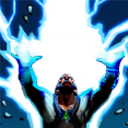 Thundergod's Wrath in some dire situation it is usefull to scout the position of the entire enemy team.
Thundergod's Wrath in some dire situation it is usefull to scout the position of the entire enemy team.
- Damage: If you have certain setups for multiple heroes or it is simply a crouded teamfight, it does signicant damage, ignoring magic resistance.
- Teamfight irritation: Because the enemies can see the Sunstrikes, Cataclysm can make a teamfight much more chaotic for the enemy, as they want to dodge the Sunstrikes but can get eventually into bad positions because of that.
It is also important to work, with this Talent, Sunstrike into your list of teamfight spells. Usually you'll have
 Tornado
Tornado,
 Chaos Meteor
Chaos Meteor,
 EMP
EMP,
 Deafening Blast
Deafening Blast in mind when going into a teamfight.
 Sun Strike
Sun Strike not so much, as it rather underwhelming in bigger teamfights. With Cataclysm though it can be good spell to use in a teamfight, for any of the previous reasons.
Keep in mind still, that it is not worth to use the Cataclysm over the normal Sunstrike, if you go on a single target that is beeing setup. In theory you have the potential to double that damage from the spell, but most of the time, you won't hit either of the Sunstrikes and then you'll waste that 90s cooldown.
Back to the talent choice.
The alacrity buff is usually the safer and more consistent choice, someone on your team will deal physical damage and he will be greatful to get that buffed
 Alacrity
Alacrity. The cataclysm however adds quite some potential to teamfights (and also is more fun), so it realy depends on the game, if you need that buff in physical damage, or the added benefits of that Sunstrike variation.
Level 25: -16s Tornado cooldown vs AOE Deafening Blast
Again a more controversial choice.
The AOE blast, as explained in the according chapter, will give you more positioning freedom and some more uses to the blast. A decent choice, if you can make use of those opportunities. Also it looks hella fancy.
In my mind the better choice in most games, if there is not a special need for the special uses of the AOE blast, is the CDR for Tornado.
This will make your late-game impact uncomparable. You'll be down to 12s cooldown, with Octarine Core, a valid assumtion to have at level 25, down to 9s. With this upgrade you'll have great improvements for your lategame:
- The ability to push out every creepwave everywhere.
The great range and almost non-existing cooldown allows you to go to a lane, cast Tornado in the according direction and you can be sure that this lane will push.
It will also be a horror to go highground against it for your enemies. They'll never have a healty creep-wave and can get harrassed down and brought in bad positionings themself. It also can cancel TPs over an laughable range, giving you the chance to have someone on your team savely split push.
- Final form of the 'Dancing Invoker'.
In lategame, with items like Aghanim's Septer,  Octarine Core and
Octarine Core and  Refresher Orb you basically have spells for days. (Spells for days? - Spells for days!... Please someone get that reference) You can endlessly chain combos of Tornado into other spells as your Tornado will always be up at the end of one combo, to start the next one, resulting in an Invoker that dances around and continiously throws out spells. This is not only one of the hardest lategame scenarios to deal with in any game of Dota, but also by far the most fun part of playing Invoker.
Refresher Orb you basically have spells for days. (Spells for days? - Spells for days!... Please someone get that reference) You can endlessly chain combos of Tornado into other spells as your Tornado will always be up at the end of one combo, to start the next one, resulting in an Invoker that dances around and continiously throws out spells. This is not only one of the hardest lategame scenarios to deal with in any game of Dota, but also by far the most fun part of playing Invoker.
- Eventually allow a No-Aghs build.
In most Invoker builds you want an  Aghanim's Scepter to massively boost not only your spell damage but also your ability to put out more and more spells.
Aghanim's Scepter to massively boost not only your spell damage but also your ability to put out more and more spells.
Without Aghs you have 6s cooldown on  Invoke. If you carefully switch Tornado in and out, you can develop a lategame playstyle that can continously use, simpler, Tornado combos, even without having an Aghs. This can be very useful for lategame situations, as it frees up an item-slot where you can put a true late-game item such as
Invoke. If you carefully switch Tornado in and out, you can develop a lategame playstyle that can continously use, simpler, Tornado combos, even without having an Aghs. This can be very useful for lategame situations, as it frees up an item-slot where you can put a true late-game item such as  Bloodthorn,
Bloodthorn,  Eye of Skadi or an urgent Gem of Truesight.
Eye of Skadi or an urgent Gem of Truesight.
With 7.07 the AOE Deafening Blast got a new bonus point however, as it synergizes quite nicely with the 'Cataclysm' talent. Especially with a
 Refresher Orb
Refresher Orb and the new Refresher Shard, a double (or even tripple) AOE Blast + Cataclysm is, even with the random chance of the Cataclysm Sunstrikes hitting, devastating in any teamfight.
The points for the Tornado, even with the nerf to -16s instead of -16s, still stand and in a lot of games this will be more usefull. With the Cataclysm and a Refresher Orb or Shard, the AOE Blast can have a massive impact though, so in games where you need more aggressive teamfight and are ahead this may be the better choice.
General Item Guide
In this chapter I will go over every item that you may want to purchase. I will try to list why it may be useful, why it should be bought in what situation and if needed explain the active uses. I will not put the items into categories but try to tag them with tags such as 'defensive' or 'mana-regen'.
I will not go over items that are only purchased to build up a certain item and also not over items that you possibly need independent from your hero, mostly consumables.
I will create entries for every item that can be reasonable, even if it is just for a very rare occassion, so if you want to buy items that are not from this list, you realy should think twice and find good reasons to purchase it. For example I won't list Tranquil Boots as they are imo never an even considerable choice of boots.
Still you'll find items in here that may seem odd to go for on Invoker. In my opinion one of Invokers biggest strength is his ability to adapt to every line up (both allied and enemy) with both his skill-build as well as his item-build. Therefore to fully understand Invoker you have also be able to pick the right items according to your game.
It is for me also one of the most interesting parts of an Invoker-game to carefully create a custom item-build for each unique game.
Of course some items are more preferred to go for than others, but often you will be struggling in a game of Dota and the usual optimal choice will not be viable. Then you often can improvise and salavge the situation by adapting your item-build.
In case you are wondering about the order: I just went through the shop by in-game category of item and created an entry for every useful item, so this list has no priorities what so ever. You'll find information on how to create item-build depending on the game and skill-build in the chapters about the showcased builds.
Index:
 Infused Raindrops
Infused Raindrops
Tags: Earlygame, Optional, Defensive, Farm
This item can be a regular pickup between the 5-10 min mark. It can protect you from a few harrassment spells, like Linas
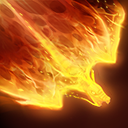 Dragon Slave
Dragon Slave and also gives you mana-regen for a few additional Alacrity uses. It also builds into an
 Urn of Shadows
Urn of Shadows, which is a quite normal item for a QuasWex build.
You should pick it up if:
- You are ahead enough to sneak it into your item progression. It can eventually protect you from ganks, allowing you too keep your advantage and also allows you to farm a bit better.
- You are scared of magical damage ganks or lane harrassment, best example again beeing Lina.
 Blight Stone
Blight Stone
Tags: Earlygame, Optional, Rare, Aggressive
It is quite rare that having this item early on is worth it. You can't underestimate your physical damage though and Blight Stone is a cheap upgrade for that.
You should pick it up if:
- You want to go a physical damage dealing build. This might rarely be the optimal build, but if your team is in need of such or synergizes very well with it, it can be a decent route to go for Invoker.
- You want to build a
 Medallion of Courage. There are builds that can make use of the Medallion, generally defensive builds where you focus on getting armor. If you feel save enough in your lane and you still want to go for a Medallion, you can get the Blight Stone first to make use of your increase in physical damage.
Medallion of Courage. There are builds that can make use of the Medallion, generally defensive builds where you focus on getting armor. If you feel save enough in your lane and you still want to go for a Medallion, you can get the Blight Stone first to make use of your increase in physical damage.
 Ring of Protection
Ring of Protection
Tags: Earlygame, Optional, Rare, Defensive
You usually don't want to pick this item up alone. Most times if you get this item, you'll buy a full
 Ring of Basilius
Ring of Basilius. As explained in the chapter about hero-specific match-ups, it can be a decent choice to have one or two of theese additionally in your inventory to protect you from the constant harrassing
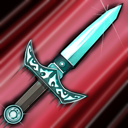 Stifling Dagger
Stifling Dagger from Phantom Assassin.
 Blink Dagger
Blink Dagger
Tags: Midgame, Lategame, Hybrid (Defensive/Aggressive)
Blink Dagger is a very popular item for Invoker. It is great in many ways, both defensive and aggressive. Your positioning becomes much easier and you also gain the ability to jump unexpecting targets. By that you reduce the chance to fail pick-offs that would otherwise for example rely on long-range Tornados. Also as defensive item it is especially useful for Invoker, as you often can provide you enough time with your spells like
 Tornado
Tornado,
 Ice Wall
Ice Wall or even
 Cold Snap
Cold Snap to blink away from incoming threats.
You should pick it up if:
- You are well ahead in the game. You gain the ability to play much more aggressive and by that extend your lead even further. You generally don't want to get it as first major item, as you will be lacking stats, especially mana pool, to make extensive use of it.
- Later in the game, if the team compositions make it valuable. Heroes that you need to jump from fog or invisibility, like
 Tinker,
Tinker,  Anti-Mage or heroes with a
Anti-Mage or heroes with a  Black King Bar or that have any kind of escape spell. Those make good incentives to pick up a Blink Dagger. Also very low HP heroes, or just very poor heroes in your game can make the Blink great, as you will be picking them off even more quickly than before.
Black King Bar or that have any kind of escape spell. Those make good incentives to pick up a Blink Dagger. Also very low HP heroes, or just very poor heroes in your game can make the Blink great, as you will be picking them off even more quickly than before.
- You are often getting jumped by your enemy and either they don't have strong instant disables or you are confident to dodge most incoming spells by blinking away. If the situation is right, often Blink Dagger is enough of a defensive item.
- In any Blink Dagger friendly game. If there are heroes like
 Zeus,
Zeus,  Spectre or
Spectre or  Venomancer, you should think twice about getting a Blink, as it will often be disabled by there longe range/huge AOE spells. If there aren't such problematic heroes, Blink Dagger is always a good choice to improve your positioning immensely.
Venomancer, you should think twice about getting a Blink, as it will often be disabled by there longe range/huge AOE spells. If there aren't such problematic heroes, Blink Dagger is always a good choice to improve your positioning immensely.
 Magic Wand
Magic Wand
Tags: Earlygame, Core, Defensive, Stats
Wand is one of your standart very early game items. It is of great use in nearly every game, giving you some early stats and gives you in a lot of early engamgements the edge in HP and mana for eventual one more spell.
You should pick it up if:
- Always when there are heroes like
 Zeus,
Zeus,  Batrider or
Batrider or  Bristleback on your opposing team. You will get great use out of it.
Bristleback on your opposing team. You will get great use out of it.
- As a second or third very early game item, if you are ahead. You'll get use out of it, even if it not the perfect game for the item and it will give you a decent sustain improvement in your laning phase.
 Null Talisman
Null Talisman
Tags: Earlygame, Core, Stats
This is your most basic stats item. You mostly likely want to get one at the start and it is often seen to purchase a second one with in the first 3-8 min to further strengthen your laning presence.
 Soul Ring
Soul Ring
Tags: Earlygame, Situational, Rare, Mana
This item is an extremely rare thing for you. In theory it can be a great thing. In the early game you do lack mana, but you have very good HP-regen from Quas. It doesn't give you any stats though which makes it a quite bad item. It still can be reasonable to buy, if your team wants you to fight very early. You'll still need solutions for better survivabilty, either from another early HP-item,
 Rod of Atos
Rod of Atos could be an option, or from your team with heroes like
 Dazzle
Dazzle or
 Lycan
Lycan.
 Phase Boots
Phase Boots
Tags: Earlygame, Midgame, Core, Aggressive
Often you don't want to upgrade your boots for quite some time and then go straight to BoTs. If you choose to upgrade though, these are most of the times the boots to go for. Together with some levels in Exort your rightclick damage is almost unparalleled and they will greatly compensate your innate terrible movementspeed.
You should pick it up if:
- You are much ahead in your lane. Upgrading your boots at this point can allow you to further outclass your opponent.
- You are behind in the game as a whole. With the increase in damage you will have impact much earlier.
- In most QuasWex builds. Without levels in Exort you severly lack physical damage so those boots greatly compensate that and also synergize well with the movementspeed from Wex.
 Power Treads
Power Treads
Tags: Earlygame, Midgame, Situational, Defensive, Stats
When your game is not going good, you're getting ganked a lot and you get bursted, Treads can be a good defensive upgrade to your boots. They will give you more HP from swapping to strength, more mana pool from swapping to intelligence and also some valuable attackspeed to farm a little bit better.
You should pick it up if:
- You are in a realy bad game situation. It can temporarily solve your issues and get you to another item that will put you in a far better situation.
- You want to fight very early on with your team. If it is necessary for your team to teamfight with you early on, you can also get them. The stat-bonuses they provide can put you in a decent enough fighting shape.
 Hand of Midas
Hand of Midas
Tags: Earlygame, Midgame, Core
Invoker is the hero that scales by far best and longest with levels as you upgrade your spells up to the max level. He also scales very well with additional items. Therefore Midas is always an item that is valuable to you.
You should always pick it up, if you can spare the money. It will be always valuable to you, but you shouldn't sacrifice the game for it. There are plenty situations where you or at least your team will be better off, if you invest those 2.2k gold into an item that brings more immediate value like a
 Force Staff
Force Staff if you're having a hard game versus a
 Riki
Riki or
 Clockwerk
Clockwerk. Also in the other direction you shouldn't sacrifice an immense advantage in a game. Sometimes you will be far ahead at the time you could purchase Midas, but you run the risk that if you don't pressure more at this point, you'll loose the adavantage. In such a situation a more aggressive item like
 Blink Dagger
Blink Dagger or
 Orchid Malevolence
Orchid Malevolence should be picked up, to keep up the pressure and directly go to higher tier items.
 Boots of Travel
Boots of Travel
Tags: Midgame, Lategame, Core
In the lategame eventually every hero wants to have those boots to have the spare inventory slot and the far greater mobility on the map. Invoker is not different here, but he is also one of the heroes that can justify getting them much earlier. Invoker with Alacrity and Forge Spirits is a strong splitpush threat and with Boots of Travel he can push this advantage to the extreme.
You should pick it up if:
- In the lategame, if you have the money and are not immediately needed to buy other item like a
 Scythe of Vyse or a
Scythe of Vyse or a  Black King Bar.
Black King Bar.
- In the midgame, if you are ahead by a good margin and can make good use of your splitpushing capabilities, maybe because they have no strong catch for you.
- In the midgame, if you are in a good position, but your team is not. Building towards more of Invokers powerfull splitpush can relieve pressure from your team.
 Moon Shard
Moon Shard
Tags: Lategame
You'll probably never want to pick this up as an actual item as it won't give you anything but attackspeed and as Invoker you'll never want to rely on just attackspeed to have an impact. If you have the money in the very lategame though, it is a significant boost to your attack damage, so there is no reason not to buy it.
 Ring of Basilius
Ring of Basilius
Tags: Earlygame, Defensive, Mana
Ring of Basilis is a qutie regular pickup for Invoker as one of your small very early game items. Depending on the matchup, it can be good as a first item from the start, or a second item after for example a
 Null Talisman
Null Talisman to improve your laning phase. It will give you a decent armor buff that can be very useful in a lot of matchups and also give you enough mana for additional Alacrity uses to greatly improve your laning and farming capabilities.
An interesting note is that after you have more than 1.3 base mana regen, you will get more mana and the same armor (
at least for yourself, not for your Forged Spirit) out of it, if you disassemble it into a
 Ring of Protection
Ring of Protection and
 Sage's Mask
Sage's Mask. You will loose the damage part from the item, which will be quite insignificant though.
You should pick it up in lane matchups that will harrass you with physical damage, such as
 Phantom Assassin
Phantom Assassin,
 Alchemist
Alchemist with his
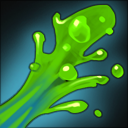 Acid Spray
Acid Spray or
 Lina
Lina with her long range auto-attacks. You should purchase it in such situations, no matter if the game is going good or not, as it is fairly cheap and will give you a great boost in both aggressive potential from the mana it gives as well as your defensive.
 Urn of Shadows
Urn of Shadows
Tags: Earlygame, Optional, Aggressive
Urn is a great cheap item for any game in which you want to go for early aggression. It synergizes greatly with
 Cold Snap
Cold Snap, gives you some early stats and also decent early mana-regen. This allows you to chase down almost every enemy by simply cold snapping and aggressivley urning someone.
You should though only pick it up, if you are realy sure, you are going for kills in the first around 15 min. Urn is also for yourself not as valuable as for other heroes, as the healing part of the item is quite wasted on you, as you usually have enough HP regen from Quas
 Ring of Aquila
Ring of Aquila
Tags: Earlygame, Rare, Defensive
Building Wraithband into Aquila was for a time quite popular as start items. It gives you good armor, decent damage and some attack speed from the extra agility. It can be valuable in a matchup where you only get harrassed by rightclicks, maybe against a
 Drow Ranger
Drow Ranger. In most cases it is enough though to get a
 Ring of Basilius
Ring of Basilius.
 Medallion of Courage
Medallion of Courage
Tags: Earlygame, Rare, Hybrid(Defensive/Aggressive), Mana
A quite rare item for Invoker, but it is in the right situation a realy good pick. It will give you good armor and mana regen. It also synergizes well with your strong rightclicks and with your Forged Spirit that also reduces armor.
You should pick it up if:
- You are in dire need of armor in your, but also want to have aggressive potential.
- You want to build on a physical damaged based lineup of your own team or an enemy team that is very vulnerable to physical damage.
- You are ahead in a lane that you can win by physical damage. Investing in the Medallion can allow you to further dominate the lane.
 Drum of Endurance
Drum of Endurance
Tags: Midgame, Optional, Mana, Stats
Drums is an excellent item to build in very active games. It gives you better survivability, movement speed and mana regen. All the things that a Invoker needs in a the early midgame. You should prefer it on Exort builds, as they give you the necessary movement speed and the bonus attack speed also synergize well with your high damage rightclicks. You can also build them in Wex based builds to further increase your mobility and aggressive potential, but in most situations with Wex builds, you'll need a bigger item at the point where you'd buy Drums.
You should pick it up if:
- You are ahead in an aggressive game. It will allow you to increase your lead substantialy.
- In a game that is very hard to play at around 10-15 min. You will get mobility and mana to keep you up until you can get a bigger item.
 Force Staff
Force Staff
Tags: Midgame, Core, Optional, Hybrid(Aggressive/Defensive)
Force Staff is a great item to increase Invokers potential, both aggressive as well as defensive and also gives with the +10 intelligence a nice boost in mana pool. Later it can also build into a
 Hurricane Pike
Hurricane Pike to further better your stats, rightclick abilities and positioning in general.
You should pick it up if:
- You are against heroes that make force almost a must-buy, such as
 Riki,
Riki,  Clockwerk,
Clockwerk,  Skywrath Mage,
Skywrath Mage,  Earthshaker,
Earthshaker,  Monkey King. Having a force against such heroes lowers their kill potential on you immens and also against allied heroes as you can save them.
Monkey King. Having a force against such heroes lowers their kill potential on you immens and also against allied heroes as you can save them.
- You need more mobility in general. In some games team-fights become very crowded and difficult to be positioned correctly. Invoker always relies on good positioning and having a force makes your life a lot easier.
- Against heroes with weak escape spells, like
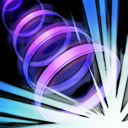 Time Walk. Often you want a
Time Walk. Often you want a  Blink Dagger to chase down heroes, but it is often also not a viable pick-off, because they have ways to cancel the blink. In such situations the Force Staff is the better item as it, if used well, will give you almost the same mobility and won't get canceled. Especially if heroes you chase have a way to fight you for a moment but then try to escape.
Blink Dagger to chase down heroes, but it is often also not a viable pick-off, because they have ways to cancel the blink. In such situations the Force Staff is the better item as it, if used well, will give you almost the same mobility and won't get canceled. Especially if heroes you chase have a way to fight you for a moment but then try to escape.
 Veil of Discord
Veil of Discord
Tags: Midgame, Rare, Stats
Veil is rarely a good item. While on paper it looks like a good and easy pickup, it almost never fits in a good build. The positive things are the easy build up, you'll often have one or two Null Talsimans from the laning phase, some armor is often good for Invoker and you deal tons of magic damage. The problem is that the increased magic damage you can deal with Veil is outclassed by
 Aghanim's Scepter
Aghanim's Scepters
 Invoke
Invoke cooldown reduction and bonus to your abilities. Even
 Octarine Core
Octarine Core should be preferred to it for the same reasons. It also gives almost no mana-regen or -pool, only from the few intelligence it provides, so you can rarely make use of the increased magic damage. It is cheaper though, so it might be useful in a situation, where your team relies on you dealing even more magical damage, earlier on.
It can also be a follow-up item in a QuasWex build game, where you don't need an
 Orchid Malevolence
Orchid Malevolence immediatly and you have a lot of gold, before you have maxed out in Wex. With EMP casts you will have the mana to conequently use spells and Veil. In most of those game going directly for an aghs is still the stronger choice as it will give you more options to continue, but if you are somehow pressured into further focusing on magic damage quickly, the Veil will do that faster than the aghs as the first few levels in Exort won't give as much damage to you.
 Aether Lens
Aether Lens
Tags: Earlygame, Midgame, Optional, Mana
Lens is in my opinion a very underrated item for Invoker, at least in game that are very action packed from minute 10 to 25 or so. Invokers biggest problem in this timing window is to never have enough mana to cast a lot of spells. The other problem is the 6s cooldown on
 Invoke
Invoke but as your spells won't all be at an equally high level it is most times enough to get out all your strong spells, if you had the mana. Lens gives Invoker enough mana to keep up long fights and also to farm in the meantime with constant
 Alacrity
Alacrity uses. Its spell damage buff is neat and the range increase is actually a quite strong thing to have. While it doens't obviously do anything for
 Sun Strike
Sun Strike (
no, you can not sunstrike into other games now), it provides basically half a level in Wex for the
 Tornado
Tornados range, which is quite noticeably on level 1-2 Wex, and especially makes
 Chaos Meteor
Chaos Meteor a lot more comfortable to cast. (
Don't build it to often, you'll get accustomed to the meteor range and then run to your target like an idiot trying to cast it from far away)
It is difficult to place into an item build though. In my opinion it can be a substiute for the
 Hand of Midas
Hand of Midas, if you can be sure to fight a lot after getting it. It might even provide you with enough money via good fights to purchase a midas after that. Just remember to realy soon start fighting with the item, as it will loose its value as you purchase even slightly bigger items like
 Aghanim's Scepter
Aghanim's Scepter or
 Eul's Scepter of Divinity
Eul's Scepter of Divinity, very quickly.
Note: Aether Lens does not increase the cast range of  Ice Wall but does affect the range of
Ice Wall but does affect the range of  Deafening Blast.
Deafening Blast.
 Solar Crest
Solar Crest
Tags: Midgame, Rare, Optional, Hybrid(Aggressive/Defensive)
Not an item you actually want to build alone. You only should go for it, if you already build a Medalion of Courage and won't be able to get a noticeable item to replace that one in time. Then it can be a good boost in both your defensive, more armor and the miss-chance and also in your aggressive potential, because of the additional minus armor and accuracy effect on your enemies.
 Necronomicon
Necronomicon
Tags: Midgame, Lategame, Optional, Splitpush, Aggressive
Once the core item for Invoker, Necro is now a very situational pickup. In the right game it still hods it value though. Barely anyone can fight you 1v1 with the additional triggers for
 Cold Snap
Cold Snap and the necros manaburn and you can mow down towers, especially with
 Alacrity
Alacrity on the necro warrior. It does provide very bad stats for you for the price, only up to 24 intelligence, which is a good buff for your damage and mana-pool, but is for it's 5050 gold by far not effective.
If the game forces you to go for a lot of splitpush or the gameplan of your team was that from the beginning, it still is a great item for that purpose. No tower will stand a chance and the strength it gives will also allow you to get out of some more clutch situations.
 Dagon
Dagon
Tags, Midgame, Lategame, Rare, Aggressive
You shouldn't get this item in a serious game, almost never. The stats it provides are neglible for its price and the damage effect is outclassed by many items that actually synergize with your own spells. In the very lategame, it can be a useful pickup though. You will have the mana to repeatedly use it and it can bring the small edge in some fights to either burst down a high priority target quickly or to focus fire a strong tank, most noteably
 Timbersaw
Timbersaw down.
 Eul's Scepter of Divinity
Eul's Scepter of Divinity
Tags: Midgame, Core, Hybrid(Aggressive/Defensive), Mana
Euls is about the best utility item for Invoker. It can be used defensively, dodging things or purging debuffs like silence. It gives you lots of mana-pool and -regen and also good movementspeed. It also is as a great setup for a lot of your spells, very similarly to your own
 Tornado
Tornado with the advantage of having a fixed lift time.
You should pick it up:
- As a defensive item against silences, slows, projectile based spells. While there are better options for all single purposes,
 Lotus Orb,
Lotus Orb,  Force Staff/general movement speed items and
Force Staff/general movement speed items and  Linken's Sphere repsectevely and
Linken's Sphere repsectevely and  Black King Bar for all three purposes, Euls is the most effective to combine those uses and add a lot of mana to it.
Black King Bar for all three purposes, Euls is the most effective to combine those uses and add a lot of mana to it.
- As an aggressive, catch item. Especially with the early few levels in Wex, Euls is a better more safe catch than Tornado. You can combo spells after the lift the same way you do with Tornado, but have the advantage of having an additional spell available for it, as you obviously don't need to have Tornado invoked. This allows Euls combos to be quicker and even more deadly.
- As additional or extended lockdown. If your team lacks ways of canceling TPs or channeled spells, Euls is also a great interrupt to add to your only two ways of stunning.
- As the optimal hybrid item. You are rarely in the wrong when purhasing Euls on Invoker. If you are not sure, what item to go, not sure how the game will be going and what the plan will be, Euls is the item to go. It combines good mana, aggression, defense and mobility, useful in about everygame.
Excursion:
 Eul's Scepter of Divinity
Eul's Scepter of Divinity as a spell
If you think about it, Euls active works just like your
 Tornado
Tornado, just as a targeted cast and a little bit worse in most regards (
Damage, range, duration dependent on Quas), but it doesn't use a slot of your invoked spells. This means you can use it as a setup, just like Torando, but from cast on for two spells at the same time and an additional third spell you invoke right after. With
 Aghanim's Scepter
Aghanim's Scepter even a third spell, as
 Invoke
Invoke will be ready to be cast again when the target comes down from the cyclone.
The most classic combo is

Euls->
 Chaos Meteor
Chaos Meteor+
 Sun Strike
Sun Strike->
 Deafening Blast
Deafening Blast, but you can of course use Euls as setup for any combinations of spells.
 Ice Wall
Ice Wall+
 Chaos Meteor
Chaos Meteor+
 Sun Strike
Sun Strike is great, mixing an
 EMP
EMP in is strong against mana-dependent heroes or
 Deafening Blast
Deafening Blast to keep enemies in the Ice Wall. With Aghs you can even add a last spell like the Blast or use a
 Cold Snap
Cold Snap to hinder your target from using some escape spell.
For even longer combos you can use Euls also on the end of a Tornado combo, to have another setup for additional one or two spells. This also can be done with first Euls than Tornado for a second round of course.
If you use a
 Sun Strike
Sun Strike in your euls combo it is a good thing to not have it at the start in your right slot, as you have to wait a moment to cast the Sun Strike, time you'd want to use to already invoke your next spell, so keep it as a spell in your right slot or as the spell you invoke, right after using your right-slot spell.
If it is useful to cast
 EMP
EMP in a combo, try to use it first, as it has a long duration to actually explode and also the biggest useful AOE.
If using
 Chaos Meteor
Chaos Meteor, a spell you can very well throw instantly to invoke another spell, remember that casting it right under the target doesn't maximize your damage. It also will roll quite a bit if you throw it immediatly after Eul's so consider this distance, to have the front side of your meteor hitting the location of your target just as it comes down from the cyclone. Meteor has a bigger castrange than Euls so be carefull to not spam your spells, to get them out asap and by that cast meteor behind the Euls target.
If you are close enough
 Ice Wall
Ice Wall is a great first spell to use, as it does not require any timing of the cyclone end and lasts long enough for any combo.
In a lot of cases using
 Cold Snap
Cold Snap as a followup spell is more useful than
 Deafening Blast
Deafening Blast as it will actually stun your target.
 Rod of Atos
Rod of Atos
Tags: Midgame, Optional, Rare, Stats, Aggressive
Rod of Atos is a quite interesting item, providing some of the useful properties of
 Eul's Scepter of Divinity
Eul's Scepter of Divinity, some more tankiness, but not as much mana and defensive capabilities. You can do similar combos with it as with the Euls, but even faster, as you don't have to time your spells to hit your target after the cyclone.
If you are well ahead in a game versus heroes that have problems with roots, like
 Storm Spirit
Storm Spirit or
 Faceless Void
Faceless Void, it can be a very great pickup. If you have a decent lead on them, so you can afford this item, before they can afford fitting defensive items, this will allow you to burst your enemies extremly fast and will further increase your lead.
You realy shouldn't get this item, if you are just a little bit behind, as it does not increase your farming rate or defensive capailities (apart from the extra stength).
To combo spells with
 Rod of Atos
Rod of Atos you realy can just spam your spells. Use atos, then two of your damage dealing spells, most likely
 Sun Strike
Sun Strike and
 Chaos Meteor
Chaos Meteor and as they start affecting the target you can use
 Cold Snap
Cold Snap to keep them in place even longer. If you have an
 Aghanim's Scepter
Aghanim's Scepter you can also put out a forth spell quickly after, for example
 Deafening Blast
Deafening Blast to keep your target in the rolling meteor or, if there is no option for them to escape
 Alacrity
Alacrity to just rightlick them down.
Atos has decently more castrange than Euls (450 more), so that is a bit easier in some situations, but keep in mind that meteor still has only 700 cast range, and you'll have to gap close a bit, to actually hit it well.
 Orchid Malevolence
Orchid Malevolence
Tags: Midgame, Core, Optional, Aggressive, Mana
Orchid is your go to midgame aggression item. It allows you to take out most heroes that have natural escapes like
 Storm Spirit
Storm Spirit,
 Queen of Pain
Queen of Pain or
 Puck
Puck. It should preferrably be bought in Wex-based builds as you will be on the aggressive early enough so your targets don't have defensivve items like
 Manta Style
Manta Style or
 Eul's Scepter of Divinity
Eul's Scepter of Divinity. It also increases your mana sustain substantially allowing you to be out on the map without ever needing to go back for regeneration. Lastly it also increases your rightclick damage by a lot, 30 damage directly plus 25 from the additional intelligence and 30 attack speed, making your attack damage quite strong, even without early levels in Exort.
It should not only be considered in aggressive Wex games though. As it builds into a
 Bloodthorn
Bloodthorn it is still worth to get far into the lategame, not only for the lockdown it provides, but also for the massive damage boost.
You should get it if:
- You are going for an aggressive QuasWex build and there is any hero that it might be good against. Orchid is a very valuable item for such builds, not only providing lockdown but also the additional damage, you sometimes lack with builds without much Exort, so any incentive is useful. That can be big targets like Anti Mage,
 Storm Spirit or
Storm Spirit or  Queen of Pain with their blinks and zaps, but also heroes that are just annoying to kill, even if they are low HP supports like
Queen of Pain with their blinks and zaps, but also heroes that are just annoying to kill, even if they are low HP supports like  Crystal Maiden with her freeze,
Crystal Maiden with her freeze,  Earth Spirit or
Earth Spirit or  Dazzle.
Dazzle.
- You are into the later game and even though the enemy might have defensive items, you need more of that silence for your team. Orchid is not only good for pickoffs and early aggression, but also for teamfights in the later game. The damage buff synergizes greatly with your massive damage output and with Invoker you have to play around defensive items like
 Black King Bar anyway.
Black King Bar anyway.
- You are against a single core that is becoming too strong. With Orchid you may be capable of focusing single targets down much easier, no matter your build.
 Aghanim's Scepter
Aghanim's Scepter
Tags: Midgame, Lategame, Core, Stats
Aghanim's Scepter is your key to become the scary spell slinger you want to be. It reduces the cooldown of
 Invoke
Invoke down to 2s, removes the mana cost from it and upgrades all your spells by adding one level to your orbs when they are used to calculated values from the spells such as damage, range or duration. It does not directly increase your level in Quas/Wex/Exort, so it won't increase for example the HP regen you get when having Quas instances active and it does not increase levels from zero, so you won't be able to cast any Exort based skills, if you have zero level put in Exort but have the Aghanim.
For once this greatly increases your mana sustain. The 60 mana cost on invoke does prove to be quite the nuicance up to the midgame and as you get the 2s cooldown you will swap spells now in and out very often. This means you can adapt to any situation more quickly as you can prepare the right spells in just 4s without loosing any mana.
This also increases your damage, your control, your farming speed, your defense, basically everything your spells provide by one level. Effectively Aghs gives you instantly +3 levels and as you are the hero that scales about best with levels, this is just invaluable.
It also gives a good portion of stats, HP and mana pool, things you severly lack as Invoker.
For comboing your spells, Aghs is simply the best possible item, as it will allow you to easily create never ending chains of spells. Without it you have 6 seconds to invoke a new spell, meaning that if you use your two already invoked spells, you can then follow up with a new one instantly, but then have to wait 6s to cast anything again which is most of the time longer than your targets will stay in range. As one of those three spells is often a spell that controls your enemy in some way (
lift from  Tornado, slow from
Tornado, slow from  Ice Wall, knockback from
Ice Wall, knockback from  Deafening Blast or just the ministuns from
Deafening Blast or just the ministuns from  Cold Snap
Cold Snap), you will most likely keep your targets controlled enough for 2s though to use a forth spell if you have an Aghs. The most standart four spell combo of that kind would for example be
 Tornado
Tornado->
 EMP
EMP+
 Chaos Meteor
Chaos Meteor->
 Deafening Blast
Deafening Blast. This is an enormous increase in damage you can output in a short amount of time.
You should basically pick up
 Aghanim's Scepter
Aghanim's Scepter in any situation you can afford it. It increases your strength in every way imaginable. Sometimes it is good to purchase it after an item that you specifically need to be in a good position in a game. That can be defensive items such as
 Force Staff
Force Staff against the likes of
 Riki
Riki or
 Clockwerk
Clockwerk, an aggressive items that you want to have to keep your lead such as an
 Orchid Malevolence
Orchid Malevolence to keep up the pressure against for example
 Storm Spirit
Storm Spirit or Anti Mage before they get defensive items to counter your aggression, or hybrid items like
 Eul's Scepter of Divinity
Eul's Scepter of Divinity if you need something of both sides to stay in the game. The utility of such items can ensure you to get to your aghs quickly and without dropping your impact on the game.
 Refresher Orb
Refresher Orb
Tags: Lategame, Optional
With the introduction of the -16 second torando cooldown talent and the
 Octarine Core
Octarine Core this item lost a lot of its use. With those you gain the option in the lategame to put out lots of spells, without needing to refresh them, because you can just cycle them around and have always something on cooldown. The stats it provides also are negliable in the lategame.
However, in the right situation it still is a powerfull item. It allows you to throw out, if you are good at managing them, all your ten spells twice or just blow up everything that comes in your way, no matter how tanky it is.
You should get it if:
- Your team relies on big teamfights to win the game. If you have any big time control spells like Chronoshpere,
 Ravage or
Ravage or  Black Hole on your team, Refresher will give you a massive increase in damage, as you can almost instantly throw double the amount of spells into the controlled enemy. A classic example would be to use
Black Hole on your team, Refresher will give you a massive increase in damage, as you can almost instantly throw double the amount of spells into the controlled enemy. A classic example would be to use  Sun Strike->
Sun Strike-> Chaos Meteor->
Chaos Meteor-> EMP->
EMP->
 Refresh->
Refresh-> EMP->
EMP-> Chaos Meteor->
Chaos Meteor-> Sun Strike in some heroes under Chronosphere.
Sun Strike in some heroes under Chronosphere.
- To burst down single, very important targets. If you have a control item like
 Scythe of Vyse or don't need it against a hero, you can burst a target down with refresher, no matter who they are, no matter how tanky they are. With a double combo of Sunstrike,
Scythe of Vyse or don't need it against a hero, you can burst a target down with refresher, no matter who they are, no matter how tanky they are. With a double combo of Sunstrike,  Chaos Meteor,
Chaos Meteor,  Deafening Blast and the control of hex, you can deal about 3k damage, after reduction.
Deafening Blast and the control of hex, you can deal about 3k damage, after reduction.
- You choose the AOE Blast level 25 talent. With the tornado cd talent you're less likely to throw out all you spells in the minimal time that Refresher allows, but rather a long chain with multiple Tornados. With the AOE blast and Refresher you can however have the probably biggest AOE impact in the whole game. You can effectevly knockback and disarm an entire team for 4 and 13 seconds respectively.
- You are needed to be the main carry in the lategame. Used perfectly a full sloted Invoker with a Refresher Orb is able to win a lot of teamfights on his own. If you are capable of that and are needed to put the game on your shoulders, get the Orb and pull out some huge combos.
Effectively using
 Refresher Orb
Refresher Orb is a hard thing to learn, as it is very difficult and takes lots of experience and invoker-feeling to manage which spells are good to refresh in what situation, if you only need two or three spells double, or if you wait a bit and can refresh even more spells. It also is a situation that won't come that often in actual games, so you will not have much experience with this situations. Training for it is also not very effective as you're rarely in a position to pull out that trained 8-spell combo, you trained in demo mode, perfectly, because of something like silences or slows interrupting your flow. It still is good to think about and try out such large combos from time to time as it will make you more fluently with comboing in general and remembering spells as well.
With the addition of Cataclysm and the subseqent improved usefullness of the AOE Deafening blast from 7.07 give imo new life to this item. As said in the chapter about Cataclsm, multiple Blasts + Cataclsms can be a spectacular way to win teamfights, so if you have those talents, Refresher has quite some more reasons to be picked up.
 Scythe of Vyse
Scythe of Vyse
Tags: Lategame, Core, Optional, Mana
Hex is one of those standart lategame items to have control over important enemy targets. With the introduction of
 Lotus Orb
Lotus Orb which can dispell the hex effect, the item has become a bit less popular, but in most scenarios it still is a powerfull item. Especially for intelligence heroes it is a strong lategame item, giving 35 intelligence, increasing your damage output by quite a lot.
The Scythe is also most of the time a good enough setup to throw spells on the target, similar to the setup
 Rod of Atos
Rod of Atos provides. It does not keep your target completly in place, but the slow to 140 movementspeed and more importantly the complete silence and mute ensures you hitting spells like
 Chaos Meteor
Chaos Meteor or
 Sun Strike
Sun Strike.
You should get it if:
- You need more lockdown in the lategame in general. Since the Deafening Blast is no hard stun anymore, Invoker actually has no hard disable. Hex fixes this, at least for single target and is a great item all around.
- You are against one single core that is making problems. With Hex you can eventually jump and blow him up.
Hex is often countered by buying
 Linken's Sphere
Linken's Sphere.
 Cold Snap
Cold Snap is a great spell to trigger it as it has a great range and instant cast time.
 Octarine Core
Octarine Core
Tags: Lategame, Core
Octa core is the second item you can get to incrase your spell throwing abilities. It does not increase your potential as much as the
 Aghanim's Scepter
Aghanim's Scepter does, but it still is a great upgrade. It provides a huge boost for mana and HP and also lets you heal from your spells, making you qutie tanky even in the lategame.
You should buy it if:
- You are have the money and don't need to build specific aggressive or defensive items. The core does increase your potential in any way, more split push, more damage, better defense, better teamfight control, so it is valuable in any game. You should prioritize the Aghanim though, as its benefits greatly outclass the Octarines.
- You are in the lategame and have the -16s CDR talent for
 Tornado. In lategame where you don't have the inventory space for both an Aghs as well as the Core, because you need certain important items for that games otherwise, you can replace the
Tornado. In lategame where you don't have the inventory space for both an Aghs as well as the Core, because you need certain important items for that games otherwise, you can replace the  Aghanim's Scepter with the
Aghanim's Scepter with the  Octarine Core. You won't be as strong in terms of teamfight control and magic damage output, but with the CDR talent and the Octarine you can chain endless small combos with using Tornado a lot and therefore still have a huge teamfight impact.
Octarine Core. You won't be as strong in terms of teamfight control and magic damage output, but with the CDR talent and the Octarine you can chain endless small combos with using Tornado a lot and therefore still have a huge teamfight impact.
- You need tankiness against damage that isn't physical or comes from some form of hard lockdown, mostly strong DOTs from the likes of
 Venomancer or a
Venomancer or a  Radiance.
Radiance.
 Vanguard
Vanguard
Tags: Midgame, Defensive, Rare
This is not a item you usually want to pick up. As w33har though made a build with
 Vanguard
Vanguard +
 Maelstrom
Maelstrom work I'll be mentioning it. Vanguard does make you tanky, makes up for your relatively low HP pool and adds up to an incredible amount of HP regen with your Quas instances. Otherwise it doesn't synergize with Invoker at all though.
You only should go for this, if you go for a Wex based build, as the movement speed you gain will make the tankiness actually useful. Also make sure no other hero on your team can fulfill the role of this kind of tank.
Heroes that can make you consider going for this:
 Venomancer: His long DOTs make this a viable item to counter him a bit. (For sure not the best counter!)
Venomancer: His long DOTs make this a viable item to counter him a bit. (For sure not the best counter!) Sniper: Together with the Wex movement speed you can frontline a bit better against his
Sniper: Together with the Wex movement speed you can frontline a bit better against his 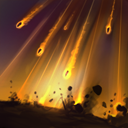 Shrapnel.
Shrapnel. Undying: Makes the zombies a lot less useful.
Undying: Makes the zombies a lot less useful. Viper: You are more likely to escape from him, or survive manfights with your team.
Viper: You are more likely to escape from him, or survive manfights with your team.
Again: be very sure that this build is good, before you go for it.
 Black King Bar
Black King Bar
Tags: Midgame, Lategame, Defensive
BKB is an item that is in some games simply needed for any core hero and also for supports, if they can afford it. Invoker can be killed off quite quickly, if he is controlled, so BKB, with the according reaction speed, is the ultimate defensive item for you. If you get it out before some stun hits you or before you are nuked down, you can quickly get out of any situations by using some spells defensive like
 Tornado
Tornado,
 Ghost Walk
Ghost Walk or
 Deafening Blast
Deafening Blast.
It also is a strong teamfight item for you, as you want to constantly reposition with Invoker and a lot of enemy spells will try to keep you from doing so.
You don't however want to build it. It is only defensive with almost no useful
stats or synergy for you. Therefore if you do have problems surviving or beeing controlled, search for other items first, that may not cover the complete range of defensive options, but are good enough for some purposes and do synergize with Invoker much better.
Good defensive alternatives, if only a specific defensive mechanism is needed are:
 Lotus Orb
Lotus Orb,
 Linken's Sphere
Linken's Sphere,
 Eul's Scepter of Divinity
Eul's Scepter of Divinity,
 Shiva's Guard
Shiva's Guard,
 Force Staff
Force Staff/
 Hurricane Pike
Hurricane Pike,
 Eye of Skadi
Eye of Skadi,
 Assault Cuirass
Assault Cuirass.
You should pick it up, if more than three heroes are becoming problems for you by either successfully ganking you or crippling your teamfight abilities. Such problematic heroes can be anyone with
 Scythe of Vyse
Scythe of Vyse,
 Orchid Malevolence
Orchid Malevolence/
 Bloodthorn
Bloodthorn,
 Abyssal Blade
Abyssal Blade,
 Rod of Atos
Rod of Atos, etc.. Other heroes would be
 Brewmaster
Brewmaster,
 Bristleback
Bristleback,
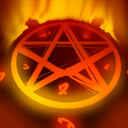 Doom
Doom, Earth Shaker,
 Earthshaker
Earthshaker,
 Kunkka
Kunkka,
 Night Stalker
Night Stalker,
 Arc Warden
Arc Warden,
 Luna
Luna,
 Nyx Assassin
Nyx Assassin,
 Meepo
Meepo,
 Venomancer
Venomancer, and most intelligence heroes that have a stun or slow that can be used multiple times in a fight.
If you are in a game where some of those heroes get considerably strong, you should consider the BKB to fight unhindred.
 Lotus Orb
Lotus Orb
Tags: Midgame, Lategame, Defensive, Mana
In most games you see Invoker pick up a
 Linken's Sphere
Linken's Sphere as a defensive item and additionally mana providing item. If you are however not in dire need of a Linkens specifically and are facing opponents that deal a significant amount of physical damage, you can consider getting a Lotus Orb instead. It has also some very good additional defensive utility for you. You can purge dusts to escape into
 Ghost Walk
Ghost Walk, purge slows and light disables like roots from you and also from your team mates. Most importantly though you can instantly remove silences. It also provides a good amount of mana pool and regeneration.
Lotus Orb is an all around great defensive item for Invoker, protecting you against physical damage a bit, from silences, from slows, from reveals and also gives you the chance in some situations to have that clutch reflected spell. You should always consider it as one of your first options for a defensive item.
 Hurricane Pike
Hurricane Pike
Tags: Midgame, Lategame, Optional, Defensive
You rarely build a
 Dragon Lance
Dragon Lance first on Invoker that you then want to upgrade, but you are often in the situation to have a
 Force Staff
Force Staff in the mid to late game and it feels like that cheap item, that you need but don't realy want to have in your inventory anymore. Upgrading to the Hurricane Pike can be a great thing though. It will give you some good additional, defensive stats, gives you a slightly better aggressive potential, as you rightclicks will be quite strong at this point and also makes your positioning in teamfights a bit easier, as you have the bigger range to righclick in between your spells.
You should pick it up if:
- You are in the lategame and want to make your
 Force Staff more useful.
Force Staff more useful.
- You are ahead in a game that you can win over with physical damage. Getting the Pike earlier can also be a strong upgrade, if your team relies on your rightclicks a lot and wants to push their adavantage.
- You are in a slight defensive position, and are sure the additional 15 strength and 20 agility will make you survive the next fights.
 Shiva's Guard
Shiva's Guard
Tags: Midgame, Lategame, Core, Defensive
Shivas is one of Invokers classic armor and teamfight items. It will give you great survivability against physical damage and also gives you better control, damage and vision in teamfights. As intelligence heroe you also gain a good amount of damage and mana.
The slow from its active also can allow you to have an easier time placing your spells. It is not a strong setup like stuns or roots, but the 40% slow is significant enough to have an impact like keeping your target longer in a meteors way or in the range of an EMP.
You should pick it up if:
- You are in need of plain armor and don't need any other utility as defense. Shivas will give you that and some additional benefits on top.
- You often take rightclick heavy teamfights. The aura, the damage, the slow, the vision and the armor on you will give your team often the edge in a teamfight.
 Linken's Sphere
Linken's Sphere
Tags: Midgame, Lategame, Core, Defensive, Mana
Linkens is one of your standart defensive items. While providing the obvious defensive mechanism of blocking a spell you also get a good amount of stats and regen which is often enough to constantly be active.
You should get it if:
- You are often initiated on by single target stuns or slows. The obvious reason, but Linkens is not only a good defensive item in that specific regard, but also very good statswise for you.
- You are lacking mana and fear that in the near future, hard lockdown spells could become a problem. Linkens provides you with enough mana for most games and so it is also good to buy it preemptively. In the lategame there are often things like
 Scythe of Vyse or
Scythe of Vyse or  Abyssal Blade picked up and with getting a Linkens you are already ready for that.
Abyssal Blade picked up and with getting a Linkens you are already ready for that.
Rembemter that Linkens is not your only defensive options. If you're not against initates that rely on single stuns then other items like
 Blink Dagger
Blink Dagger or
 Lotus Orb
Lotus Orb can be a more fitting solution.
 Assault Cuirass
Assault Cuirass
Tags: Lategame, Optional, Hybrid(Aggressive/Defensive)
You are generally not the one that wants to buy this item for your team. It doesn't synergize with your spells and doesn't give you any overly useful stats. You are however by far not a bad AC carrier. With your high attack damage you benfit greatly from the attack speed and against some line-ups you simply need addtional armor.
So if your team is in need of getting an AC and you either are the only one who is somewhat fitting to buy it or your team needs to get the item quickly to survive and you are the one who can get it the fastest, don't be shy to pick it up.
You'll become less focused on casting all your spells and more on rightclicking but you'll become quite the beast at that. It also increases your splitpush potential decently.
 Crystalys
Crystalys
Tags: Midgame, Lategame, Aggressive, Rare
Generally not an item you want to pick up for itself. You are however sometimes in the situation where you see you need to rightlick more in the lategame, want to build a
 Bloodthorn
Bloodthorn later on, but only for the damage, not realy for the silence part. Then Crystalys can decently improve your rightclicks. You'll have quite the lot of attack damage and speed at this point and the crit chance will significantly improve your damage output.
 Monkey King Bar
Monkey King Bar
Tags: Lategame, Aggressive, Optional
If you are forced to go into a rightclick heavy build and you are facing lots of sources of evation, like
 Phantom Assassin
Phantom Assassin,
 Brewmaster
Brewmaster,
 Radiance
Radiance or
 Solar Crest
Solar Crest, MKB is the item to go. It does however synergize not at all with your spells, so only pick it up, if you are realy needed to rightclick a lot.
Also rember the other option to gain truestrike,
 Bloodthorn
Bloodthorn that works most of the time better with your spells and gives good stats. It has it's obvious drawbacks itself though.
MKB has the advantage of having truestrike constantly, so if the enemy also has ways to get out of the
 Bloodthorn
Bloodthorn effect, MKB will be the better choice.
 Daedalus
Daedalus
Tags: Lategame, Aggressive, Rare
If you're going fot this item you are fully commited to the rightlick-Invoker. It does massively improve your attack damage but again doesn't synergize with your spell casting capabilities.
You should realy only go for this item, if your team is severly lacking in physical damage and you are sure no other item, like a
 Scythe of Vyse
Scythe of Vyse or Ocarine Core can help you win the game.
 Bloodthorn
Bloodthorn
Tag: Lategame, Aggressive, Optional
Bloodthorn is a great item to massively boost your single target damage potential. It is the most expensive item in the game though, so it is quite a hazzle to farm it up. The item also provides very useful stats, good mana regen and good damage.
You should get it if:
- You are in need of truestrike and burst against an important target like
 Phantom Assassin. If you catch an enemy in the lategame with Bloodthorn and without them having a defensive item or chance to react, you can blow up nearly everyone.
Phantom Assassin. If you catch an enemy in the lategame with Bloodthorn and without them having a defensive item or chance to react, you can blow up nearly everyone.
- You already have an
 Orchid Malevolence and have enough money to upgrade it. With or without a specific reason to buy it, Bloodthorn massively increases your damage potential and if you have the money it is a very worthy upgrade.
Orchid Malevolence and have enough money to upgrade it. With or without a specific reason to buy it, Bloodthorn massively increases your damage potential and if you have the money it is a very worthy upgrade.
If you need it to gain truestrike and not to silence targets, think, if in some situations the MKB could be better, because there is no defensive item against it.
 Dragon Lance
Dragon Lance
Tags: Midgame, Defensive, Rare
In many games you'll purchase a
 Force Staff
Force Staff and eventually upgrade it to a
 Hurricane Pike
Hurricane Pike. If you are behind, realy don't need a force and are sure the additional stats from the Dragon Lance will keep you beeing useful, you can also buy the Lance first. It will make your rightclick impact noticable easier to execute and you'll have an easier time positioning in general.
 Helm of the Dominator
Helm of the Dominator
Tags: Earlygame, Midgame, Rare
As Sumiya, a invoker-spammer with over 6k games on him, tried this out a few times, I'm gonna mention it. When your game is realy hard, you are often beeing focused and are good with using those dominated creeps to keep you alive, this item can be a slightly viable item. You'll get an insane amount of regen together with your levels in Quas that would be rather high, because the game is going bad. The dominated creep can provide some utility like a setup from the Trollcamp, a followup stun from the centaur or an insane amount of armor from the Ice Ogres. It will also give you a strong pushing presence as you can dominate a siege creep and you can kill off towers with
 Alacrity
Alacrity on it very quickly.
Still it is extremely situational and requires a lot of specific things to occur to make this a somewhat good item.
 Maelstrom
Maelstrom
Tags: Midgame, Lategame, Optional, Push
With high levels in Wex and Alacrity you'll have a very good attack speed so in theory the lightning damage procs can be quite good. It doesn't however synergize with you otherwise at all, no stats, no mana, no setup, only damage.
You should pick it up if:
- You are in the lategame and have to push out creeps more quickly.
- You are going this rare w33har
 Vanguard-
Vanguard- Maelstrom build. Maelstrom will then give you the lacking damage, but you will be only focused on rightclick damage.
Maelstrom build. Maelstrom will then give you the lacking damage, but you will be only focused on rightclick damage.
 Desolator
Desolator
Tags: Midgame, Optional, Aggressive
If you are in the situation that you are well ahead and the enemies are susceptible to physical damage, you can go this route. Primarily you want this in a Wex based game, where you are on the aggression and can extend this lead by pressuring and pushing more and more. It is however again not an item that synergizes well with you, apart from the high physical damage you deal and a bit the armor reduction from your
 Forge Spirit
Forge Spirit.
You should pick it up if:
- You are much ahead in an aggressive game. Heroes like
 Io,
Io,  Drow Ranger,
Drow Ranger,  Earth Spirit or
Earth Spirit or  Ogre Magi may sometimes evade your magical damage at least partialy and then would be able to escape from your rightclicks. This won't happen if you can also burst them down with physical damage.
Ogre Magi may sometimes evade your magical damage at least partialy and then would be able to escape from your rightclicks. This won't happen if you can also burst them down with physical damage.
- You are needed to be the rightclick damage heroe in a game against low armor heroes.
- You are needed to split push even faster than you would already, maybe even go for backdoor problems.
 Mjollnir
Mjollnir
Tags: Lategame, Optional
If you for some particular reason bought the
 Maelstrom
Maelstrom already and have the money, there is no reason to not upgrade it. Especially with the active you can push creepwaves quite effectively.
 Eye of Skadi
Eye of Skadi
Tags: Lategame, Optional, Stats
Skadi will give you lots stats and also the ability to kite magic immune enemies. In some situation it can be a very impactful item. As Invoker is usually focused around his various spells, enemies will often get a
 Black King Bar
Black King Bar to defend against those. Then it can be great to kite them with the slow from Skadi until their immunity is over and you can throw your spells at them.
You should pick it up if:
- You face multiple heroes with
 Black King Bars that will fall quickly if they loose their immunity and can be kited. Great examples are
Black King Bars that will fall quickly if they loose their immunity and can be kited. Great examples are  Sven and
Sven and  Lifestealer.
Lifestealer.
- You need to be more tanky but don't need a specific defense mechanism like
 Linken's Sphere. Skadi will make you quite beefy and also give you the slow so you can survive and kite most assaults.
Linken's Sphere. Skadi will make you quite beefy and also give you the slow so you can survive and kite most assaults.
 Kaya
Kaya
Tags: Optional, Rare, Aggressive
The new item from 7.07, gives you some int, the new 10% Mana loss reduction and +10% spell amp. So far this item is still a bit unexplored and doesn't feel usefull on Invoker. While it does provide a decent upgrade in damage, it does effectively nothing more. The mana reduction is not enough to need a mana item less. The mana loss reduction from enemies spells can be decent but does not replace a truly defensive item.
An experimental build from me would be an alteration of my fourth build from this guide, replacing the two small additional starting items (Null Talisman/Basilius/Wand) and the Power Treads with either Basilius or Wand, brown boots and the Kaya. It gives about the same mana with roughly the same cost and the additional benefits of spell amp and mana reduciton. It makes you quite the glass cannon and reduces your physical damage, but allows you to transition directly into Boots of Travel.
 Meteor Hammer
Meteor Hammer
Tags: Rare, Midgame, Farming, Pushing
In a (professional and serious) game by 5ANCs Toppson, this item was actually build with actual success. After witnessing that analysing his build I came to the conclusion that this build is somewhat viable, if though rather situational.
In this particular build, a QW variation, (more to that in the QW section) the Meteor Hammer serves quite well for multiple reasons.
- The obvious meme-combo.
Max Quas Tornado, or Coldsnap into Tornado sets up somewhat reliably for the Meteor to come down, stun and deal good damage.
- Good early game stats.
The stats from the Hammer are actually realy good for Invoker. Int, Strength + Mana/HP regen. Int and mana regen are things Invoker always needs and the additional 10 strength are also quite welcome on him. Combined with the natural HP regen a QW builds gives it makes Invoker quite tanky.
- Farming and pushing.
A common problem with QW Invoker is that he needs to snowball to gain farm, as he lacks normal damage due to low Exort. With the reduced cooldown of the Hammer in 7.08, it is an actual usefull tool to farm and push lanes and makes up for QW Invokers lack in that department.
The time for this item to actually be picked up is difficult to pinpoint, but if found, it can actually be quite impactful.
 Nullifier
Nullifier
Tags: Lategame, Optional, Aggressive
The item can be a good pickup in games where you are ahead against heroes that want to counter your spells with items like BKB or Force Staves. It adds however not much other than that to your potential. The reasons to get this item are not different for Invoker than with any other hero that would want to get this.
How to Combine Spells to good Combos
In this chapter I will try to explain, how to think about 'combos'. What spells are good to use, in what situations you should use wich, what do items like  Aghanim's Scepter do to your combos.
Aghanim's Scepter do to your combos.
First I'm gonna go quickly over the spells and what their main purpose in a combo should be:
 Cold Snap is used to keep enemies relatively good in place.
Cold Snap is used to keep enemies relatively good in place. Ghost Walk is not realy a spell you actually combo with, but a tool to find or chase targets.
Ghost Walk is not realy a spell you actually combo with, but a tool to find or chase targets. Ice Wall is also used to keep enemies in place.
Ice Wall is also used to keep enemies in place. EMPs main purpose is to drain your enemies mana.
EMPs main purpose is to drain your enemies mana. Tornado can be used to either catch targets and setup for more spells or to finish off fleeing heroes.
Tornado can be used to either catch targets and setup for more spells or to finish off fleeing heroes. Alacrity is for physical damage.
Alacrity is for physical damage. Sun Strike is for pure, single target damage.
Sun Strike is for pure, single target damage. Forge Spirit is for physical damage.
Forge Spirit is for physical damage. Chaos Meteor is for magical, AOE damage.
Chaos Meteor is for magical, AOE damage. Deafening Blast is for keeping enemies shortly in place, disarming them and magical, AOE damage.
Deafening Blast is for keeping enemies shortly in place, disarming them and magical, AOE damage.
The interesting thing to notice should be that all your spells that allow you to chain more then one spell together by keeping your target in range somehow are
 Tornado
Tornado,
 Cold Snap
Cold Snap,
 Ice Wall
Ice Wall,
 Deafening Blast
Deafening Blast. The part of those spells that makes them useful in that regard (
lift duration, stun procs, slow, knockback duration) scale only with
 Quas
Quas.
Therefore I'll be structuring this chapter along the different (
effective, so points put into plus the eventual extra point from  Aghanim's Scepter
Aghanim's Scepter) levels of Quas, with some extra parts about items as setups.

Quas Level 0
With zero levels in Quas you actually have no spell to set up anything yourself. You either have to rely on prediction skills to land for example a
 Sun Strike
Sun Strike or on your teammates to provide fitting stuns/slows.
Any stun that lasts longer than 1.3s is a reliable setup for
 Chaos Meteor
Chaos Meteor, 1.7s is the perfect timing for
 Sun Strike
Sun Strike and in theory you need 2.9s for an
 EMP
EMP. Lower duration stuns and similary slows will require you to predict their movement after a short stun or while beeing slowed.
You can then throw your spells on the stunned/slowed targets as you want, according to what you want to do to them, like burn mana, single target damage or AOE.
This situation should occur only if you are lower then level 3. I actually had a game long ago where I played with an Invoker who actually went a 0-7-7 build. We lost, I reviewed the game multiple times and came to the conclusion that if he had put only one point into Quas at some point, we could have won as we were lacking control massively. This was also in the time where the Deafening Blast still was a stun. Having 0 Quas makes Invoker a into a hero that can only put out semi-reliable nukes and some rightclicks. Compared with the control just one point in Quas and therefore the four more spells you get can do, that is just laughable.
In the midgame you should always, even when going for a nuke-heavy WExort build, have at least two points in Quas to be able to have your various forms of setup, control, additional damage and escape.
If you get into a situation at or before level 3, by means of someone ganking your mid or getting ganked yourself and the ganker messing up somehow, remember that you don't have much mana and your spells won't do that much damage. So just because someone is in a bad spot where you can land a good Meteor or Sun Strike, don't throw them unless you are sure to kill them. They'll be in a bad spot nevertheless and if you throw your spell and don't kill them you'll soon be at a disadvantage because you wasted your mana.

Quas Level 1-2
Here is where the fun begins (
in tiny steps). You now have access to your control spells, assuming either levels in Wex or Exort and not beeing level 1. With those levels it is almost too much to speak of combos already, because of the quite short time of control they provide but there are already some situations to use your many spells.
When you're going for a early laning dominance skillbuild with 1-1-2 or a bit later 2-1-3 you now have access to all your spells.
 Cold Snap
Cold Snap
is your most useful setup spell at this point.
- You can get multiple hits with
 Alacrity or with a
Alacrity or with a  Forge Spirit on your oponent to heavily harrass him..
Forge Spirit on your oponent to heavily harrass him..
- If he is standing in a place where he has only one escape path away from you, for example on the side end of the stairs in the mid, you can throw a
 Chaos Meteor and
Chaos Meteor and  Alacrity rightlicks or a
Alacrity rightlicks or a  Sun Strike in the path where he wants to avoid the meteor at him with the intent to kill.
Sun Strike in the path where he wants to avoid the meteor at him with the intent to kill.
- If he is already low enough you can with some mini-stun procs from rightclicks try to very unreliably setup a
 Sun Strike.
Sun Strike.
 Tornado
Tornado
has a very short range and only a very short lift duration therefore is both difficult to land and also not to useful as the duration is not enough to reliably setup anything.
- If your opponent comes to close to you, you can use it to get into a slightly better position to then rightlick him.
- You can use it as a anti-gank tool, to interrupt incoming heroes. Good examples would be a charging
 Spirit Breaker or a rolling
Spirit Breaker or a rolling  Earth Spirit. With a follow up spell like
Earth Spirit. With a follow up spell like  Cold Snap or
Cold Snap or  Alacrity you can often enough punish these ganks.
Alacrity you can often enough punish these ganks.
- If you're closely chasing your opponent you can use it somewhat to setup a
 Sun Strike. You'll have to use Sun Strike first at the point you expect your Tornado to hit and then use
Sun Strike. You'll have to use Sun Strike first at the point you expect your Tornado to hit and then use  Tornado actually after that, as the lift timing is extremly short.
Tornado actually after that, as the lift timing is extremly short.
 Ice Wall
Ice Wall
does scale well with only a few levels, but with 20% slow at level 1 and 40% at level 2, it is rarely enough to hold enemies for very long. It still can be very strong, if you can get it in a position where your target is forced to walk through a longer part of the wall and not just go straight through it.
- You can try to catch your opponent off guard with an Ice Wall and can then follow up with
 Cold Snap plus either
Cold Snap plus either  Chaos Meteor if you go for a kill, or
Chaos Meteor if you go for a kill, or  Alacrity to save mana and mostly harrass.
Alacrity to save mana and mostly harrass.
- You can punish deep diving ganks. If you survive a gank that was chasing you deep under your tower, Ice Wall is a great spell to punish this kind of aggression. Together with any of your spells to follow up you are very likely to kill off the failing gankers.
 Deafening Blast
Deafening Blast
does very little at those early levels and will use up nearly all your mana, so don't use it unless you are sure the 0.25/0.5s knockback, the 1.25s disarm or the 80 damage are going to accomplish what you need. That could be either defensively against a gank or to finish someone off, but again, you most likely don't have the mana for that spell anyway.
When you're going for a more defensive QuasExort build with those levels, so 1-0-2 or 2-0-3, you will have not all your spells but decent control with
 Cold Snap
Cold Snap and
 Ice Wall
Ice Wall and also a bit earlier then the previous build.
 Cold Snap
Cold Snap
at this point is most useful with your
 Forge Spirit
Forge Spirit or your rightclicks as harrass. If your opponent is already on low health you also can go for the mini-stun into
 Sun Strike
Sun Strike. Using Forged Spirit and your rightlicks with a Cold Snap can also make it much easier to get the quite hard Sun Strike, because of the eventual more procs.
 Ice Wall
Ice Wall
with level 2 Quas is already a decent slow and landing one will give you at least the opportunity to harrass your enemy a lot or go for a
 Sun Strike
Sun Strike to kill him off.
When going a QuasWex build you'll be at something from 1-1 to 2-3. You'll have a different focus than with a Exort-based build.
 Cold Snap
Cold Snap
will be more of a setup in this build as your rightclicks won't matter that much for the lack of Exort.
- You can use it when your roamer is harrassing your opponent and with the combined rightclicks you'll get off quite a lot of attacks.
- You can use it as setup for
 EMP. With level 2-3 in Wex, EMP starts to become a good harrass spell against mana dependent heroes. As the AOE of EMP is quite large, Cold Snap and a few rightclicks are most of the time enough to keep your target in range to burn his mana and get some back for yourself.
EMP. With level 2-3 in Wex, EMP starts to become a good harrass spell against mana dependent heroes. As the AOE of EMP is quite large, Cold Snap and a few rightclicks are most of the time enough to keep your target in range to burn his mana and get some back for yourself.
- To setup for a sure
 Tornado. Against heroes like
Tornado. Against heroes like  Queen of Pain or
Queen of Pain or  Shadow Fiend that can blink away or turn around with threatening burst damage it can be a good idea to first use Cold Snap before hitting them with a Tornado. That way they're unlikely to dodge the Tornado and they will get a sure proc after they land, giving them no time to react after the Tornado.
Shadow Fiend that can blink away or turn around with threatening burst damage it can be a good idea to first use Cold Snap before hitting them with a Tornado. That way they're unlikely to dodge the Tornado and they will get a sure proc after they land, giving them no time to react after the Tornado.
If you started with  Tornado+
Tornado+ Cold Snap invoked then you can also immediatly follow up with an
Cold Snap invoked then you can also immediatly follow up with an  EMP. With this low levels in Quas you should have Cold Snap in your right place to start with and be on
EMP. With this low levels in Quas you should have Cold Snap in your right place to start with and be on


 . Then you can cast
. Then you can cast  Cold Snap, instantly invoke
Cold Snap, instantly invoke  EMP just by clicking
EMP just by clicking  Invoke once, cast
Invoke once, cast  Tornado and
Tornado and  EMP nearly at the same time. They cold snap prov from the Tornado will assure you getting another proc in by rightclicking and you will most likely hit the EMP, even if they have an escape spell.
EMP nearly at the same time. They cold snap prov from the Tornado will assure you getting another proc in by rightclicking and you will most likely hit the EMP, even if they have an escape spell.
If you are sure your target can't escape anyway, then the order of your already invoked skills doesn't matter at all, start to cast Cold Snap or Tornado and follow up with EMP plus the remaining other one.
 Tornado
Tornado
is the AOE setup or interrupt, you have at this point. Also don't underestimate the damage it does on those early levels.
- You can use it to interrupt and turn on incoming ganks. With a followup
 Cold Snap or
Cold Snap or  EMP you can kill most low HP gankers.
EMP you can kill most low HP gankers.
- You can initiate quickly on your opponent and setup for
 EMP. Similar to previous entry about
EMP. Similar to previous entry about  Cold Snap into
Cold Snap into  Tornado into
Tornado into  EMP.
EMP.
 Aghanim's Scepter
Aghanim's Scepter
at this point won't do much. Most likely you won't have it that early and you still won't have enough setup time or more importantly mana, for a fourth spell. It will mostly upgrade your damage.

Quas Level 3-4
Now things start to get juicy. Your control spells start to become some of the best of their type and your damage spells are scaling up more and more.
 Tornado
Tornado is now an almost reliable setup for
 Chaos Meteor
Chaos Meteor and
 Sun Strike
Sun Strike,
 Ice Wall
Ice Wall is a very potent slow now, with 60/80% slow and
 Deafening Blast
Deafening Blast starts to become an at least somewhat impactful spell with 0.75/1s knockback.
When going for an Exort based build, you'll be at something like 3-1-4 or 4-1-6. You'll have all your spells and except for the range of
 Tornado
Tornado and
 EMP
EMP in general all spells will have a decent impact.
 Cold Snap
Cold Snap
doesn't change much from previous levels, just a bit more procs eventually. The same uses from the previous part apply but now you have more mana and more damage, so you are much likely to go for a kill, even with just a Cold Snap to start.
 Aghanim's Scepter will give you now, due to the long enough duration of Cold Snap, a chance to cast one more spell, if you get enough procs to keep your target in range.
Aghanim's Scepter will give you now, due to the long enough duration of Cold Snap, a chance to cast one more spell, if you get enough procs to keep your target in range.- When standing on lane with
 Cold Snap
Cold Snap Alacrity and you want to attempt a kill, beccause your enemy is a bit out of position, you can use Alacrity first. It lasts long enough for a short engagement and it won't make your opponent suspicious, as you could be using it to lasthit better. Then you can invoke
Alacrity and you want to attempt a kill, beccause your enemy is a bit out of position, you can use Alacrity first. It lasts long enough for a short engagement and it won't make your opponent suspicious, as you could be using it to lasthit better. Then you can invoke  Chaos Meteor, cast Cold Snap and then Meteor. The mini-stuns will ensure your target getting hit by the meteor and that will then roast him, if needed then you can also attempt a
Chaos Meteor, cast Cold Snap and then Meteor. The mini-stuns will ensure your target getting hit by the meteor and that will then roast him, if needed then you can also attempt a  Sun Strike, your target will still be cold snapped so it is a rather easy target, or if you have the mana, ensure the kill with a
Sun Strike, your target will still be cold snapped so it is a rather easy target, or if you have the mana, ensure the kill with a  Deafening Blast. This is especially strong against heroes with escape spells, as they most likely won't get them off due to the lots of Cold Snap procs from the Meteor.
Deafening Blast. This is especially strong against heroes with escape spells, as they most likely won't get them off due to the lots of Cold Snap procs from the Meteor.
- Against heroes with not that much escape but more HP you can go for another route. You also start with the
 Cold Snap
Cold Snap Alacrity but then instead of a Meteor, you try to catch your target with an
Alacrity but then instead of a Meteor, you try to catch your target with an  Ice Wall. This will either assure a follow up
Ice Wall. This will either assure a follow up  Sun Strike from the massive slow and mini-stuns or a long lasting stay in the path of the
Sun Strike from the massive slow and mini-stuns or a long lasting stay in the path of the  Chaos Meteor.
Chaos Meteor.
- You also can use both
 Forge Spirit and
Forge Spirit and  Alacrity with a Cold Snap together. This will result in massive physical damage and also a lot of Cold Snap procs that can make a great setup for either
Alacrity with a Cold Snap together. This will result in massive physical damage and also a lot of Cold Snap procs that can make a great setup for either  Sun Strike or
Sun Strike or  Chaos Meteor. It can also lead into an
Chaos Meteor. It can also lead into an  Ice Wall to rightlick more and more.
Ice Wall to rightlick more and more.
 Tornado
Tornado
still has a very short range, but a decent lift duration.
- You now can semi-reliable get a
 Tornado into
Tornado into  Sun Strike. You have to cast Sun Strike at the position your Tornado will hit your target a bit before or at least at nearly the same time when the tornado actually hits. To finish it off you can use
Sun Strike. You have to cast Sun Strike at the position your Tornado will hit your target a bit before or at least at nearly the same time when the tornado actually hits. To finish it off you can use  Cold Snap with rightclicks,
Cold Snap with rightclicks,  Alacrity if you don't fear your target getting away or if you have the mana, a
Alacrity if you don't fear your target getting away or if you have the mana, a  Deafening Blast for an even quicker burst.
Deafening Blast for an even quicker burst.
 Aghanim's Scepter will allow you at this point to chain another spell, if your target has no way of getting away from you.
Aghanim's Scepter will allow you at this point to chain another spell, if your target has no way of getting away from you.- Then you follow up with two of the aforementioned options or get a
 Chaos Meteor into the mix if you either have a
Chaos Meteor into the mix if you either have a  Cold Snap to keep him in the Meteor or are in a spot where he can't escape the Meteors path.
Cold Snap to keep him in the Meteor or are in a spot where he can't escape the Meteors path.
- You can start doing the classic
 Tornado into
Tornado into  Chaos Meteor combo. For that you either start with
Chaos Meteor combo. For that you either start with  Cold Snap
Cold Snap Tornado, reversed or
Tornado, reversed or  Chaos Meteor
Chaos Meteor Tornado. With the Cold Snap invoked you commit to following up with that, which is good against any hero with escape or someone who is just generally fast. With the last option you have both options, either the Cold Snap for more lockdown or a
Tornado. With the Cold Snap invoked you commit to following up with that, which is good against any hero with escape or someone who is just generally fast. With the last option you have both options, either the Cold Snap for more lockdown or a  Deafening Blast for more damage from both the Blast and it assuring that the target will stay longer in the Meteor. The Blast makes this combo also viable against multiple targets that are closely together.
Deafening Blast for more damage from both the Blast and it assuring that the target will stay longer in the Meteor. The Blast makes this combo also viable against multiple targets that are closely together.
- You can also use Tornado to set up a good
 Ice Wall. With the short range of Tornado now it is almost as hard to hit the Tornado as it is to hit the
Ice Wall. With the short range of Tornado now it is almost as hard to hit the Tornado as it is to hit the  Ice Wall from that range, but if you catch someone with the Tornado you have time to place the Wall in an optimal position. For that you want
Ice Wall from that range, but if you catch someone with the Tornado you have time to place the Wall in an optimal position. For that you want  Tornado in your right slot, so you can cast it and replace it immediatly with either
Tornado in your right slot, so you can cast it and replace it immediatly with either  Ice Wall or the next spell you want to follow up after. Follow up spells can be anything from your arsenal, just remember to have
Ice Wall or the next spell you want to follow up after. Follow up spells can be anything from your arsenal, just remember to have  Cold Snap ready, if your target has any escape.
Cold Snap ready, if your target has any escape.
 Aghanim's Scepter again will give you another spell to follow up which also can be any spell, as you can keep your enemy in place with
Aghanim's Scepter again will give you another spell to follow up which also can be any spell, as you can keep your enemy in place with  Ice Wall and if necessary
Ice Wall and if necessary  Cold Snap, to get off and hit all your spells quite comfortably.
Cold Snap, to get off and hit all your spells quite comfortably.
 Ice Wall
Ice Wall
is now a very strong slow and will also last long enough for nearly any type of engagement.
When you get an initiation with Ice Wall off, you are very free in your followup spell usage. You don't have to wait for a timing so you can quite simply dump your spells on the cought target. You can use
 Cold Snap
Cold Snap for harder control or
 Deafening Blast
Deafening Blast to push your targets back into the wall, if they try to escape
 Aghanim's Scepter
Aghanim's Scepter will also simply allow you to throw more spells, also without any hard restrictions.
When going for a QuasWex build you'll now be at something like 3-4-0 or 4-5-0. If you decided to already put one or more points into Exort here, you'll have the same combobilities as the Exort-based builds, but simply with a lot less damage from most spells, but more from
 EMP
EMP and
 Tornado
Tornado and also a lot more range from the later one.
This part is actually almost the same as in the previous chapter about the QW-build. Every combo just gets much easier and deals much damage. The longer lift duration from
 Tornado
Tornado will make hitting an
 EMP
EMP easier and easier, though you still have to cast it before the Tornado hits to be sure.
 Aghanim's Scepter
Aghanim's Scepter won't give you an additional spell, if you have no Exort yet, you'll only have
 Ghost Walk
Ghost Walk as a fourth spell and that is only used to get on your targets and out of precarious situations. If you have one however you can follow up with another spell. The first three should always be
 Cold Snap
Cold Snap,
 EMP
EMP and
 Tornado
Tornado in some kind of combination. The most useful spell to follow up is
 Alacrity
Alacrity as you'll get great use of a lot of Cold Snap procs. Other spells however will be lacking in damage a lot, due to the low levels in Exort.
When indeed going for a rather rare WExort build with something like 3-5-7 or 4-7-7 at some point, you'll have the combos from both previous builds combined, depending on your levels with more or less damage from either build. The points about
 Aghanim's Scepter
Aghanim's Scepter also do apply the same way.

Quas Level 5
Now your full combo capabilities are coming online. You'll have a safe setup for
 Sun Strike
Sun Strike with the high lift-time from
 Tornado
Tornado,
 Ice Wall
Ice Wall now is an incredible 100% slow and with
 Aghanim's Scepter
Aghanim's Scepter you can unleash full 4-Spell combos.
In this part I'll assume having
 Aghanim's Scepter
Aghanim's Scepter, as without it you won't be able to achieve any bigger combinations then the already mentioned ones.
The earliest point to have this in an Exort based build will probably be 5-1-7. Before getting a sixth point in you'll most likely max Wex and then we get in the territory of using all spells in combinations, which will be handled in the next part, where you will be at a point to have max Wex and Exort. In between there is not much as only your Wex based skills will start to get stronger. Before level 3 Wex this will be basically the same as level 1 and after that it is in principle the same as with max Wex, so I can make a pretty clear cut between those two cases.
 Tornado
Tornado
is now your main initiation tool. It'll still have a quite short range, but as you now maybe have a mobility item or some upgraded boots you should have no problems hitting a target.
- First you want to always have Tornado in your right slot. It will be in most situations the first one to be cast and that way you don't waste your other active spell.
- When you now have cast a Tornado, for whatever purpose, immediatly invoke your next spell. That way you'll have two spells ready and
 Invoke will be off cooldown again, when the hit targets are on back on the ground so you can immediatly hit them with another spell.
Invoke will be off cooldown again, when the hit targets are on back on the ground so you can immediatly hit them with another spell.
- Against single targets in a pickoff situation or when you want to focus someone down in a teamfight, your second spell to be ready should be
 Sun Strike. When you have cast the Tornado, immediatly invoke
Sun Strike. When you have cast the Tornado, immediatly invoke  Chaos Meteor. Then you can cast both Sun Strike and Meteor on the point where your target is in the air and as soon as Invoke is off cooldown invoke
Chaos Meteor. Then you can cast both Sun Strike and Meteor on the point where your target is in the air and as soon as Invoke is off cooldown invoke  Cold Snap or
Cold Snap or  Deafening Blast. Blast for a bit more damage, Cold Snap for a bit more control. Timed correctly this can deal around 2k effective damage, so enough to blow up most heroes.
Deafening Blast. Blast for a bit more damage, Cold Snap for a bit more control. Timed correctly this can deal around 2k effective damage, so enough to blow up most heroes.
- When you hit multiple heroes with your Tornado and don't want to focus down a specific one, you should substitute
 Sun Strike with an
Sun Strike with an  EMP and not follow up with a
EMP and not follow up with a  Cold Snap. This will have the bigger AOE impact and a bit more utility with the mana drain.
Cold Snap. This will have the bigger AOE impact and a bit more utility with the mana drain.
The easiest way to have this ready is when having  Chaos Meteor
Chaos Meteor Tornado active. When running around you should be on
Tornado active. When running around you should be on


 so to follow up with the
so to follow up with the  EMP you just have to hit your
EMP you just have to hit your  Invoke hotkey and you can followup without any delay. The a bit more effective way is to have
Invoke hotkey and you can followup without any delay. The a bit more effective way is to have  EMP instead of
EMP instead of  Chaos Meteor active, as you want to cast EMP as the first spell, because of its long explosion delay, but it won't make much of a difference.
Chaos Meteor active, as you want to cast EMP as the first spell, because of its long explosion delay, but it won't make much of a difference.
- You obviously don't have to go for the maximum quick damage, but also can go for a bit more control and follow up with an
 Ice Wall. When your targets then land in the wall they will be forced to use defensive items like
Ice Wall. When your targets then land in the wall they will be forced to use defensive items like  Black King Bar or
Black King Bar or  Force Staff to escape the wall. If they don't have that option you can then go crazy with your spells on them. With the 100% slow you'll have time to use two or three more spells at everyone caught in the ice wall. You can also use this combo to put some problem hero like
Force Staff to escape the wall. If they don't have that option you can then go crazy with your spells on them. With the 100% slow you'll have time to use two or three more spells at everyone caught in the ice wall. You can also use this combo to put some problem hero like  Bristleback,
Bristleback,  Abaddon or
Abaddon or  Wraith King that you don't want to kill right away, 'on ice' (sry for the pun) and ignore them while they try to get out of the wall.
Wraith King that you don't want to kill right away, 'on ice' (sry for the pun) and ignore them while they try to get out of the wall.
Your other spells provide about the same combos as before, just with longer durations on  Cold Snap and
Cold Snap and  Ice Wall and a much better slow on the wall. With Aghs this can allow you to put out an extra spell after those setups but they don't need much explanation as you can simply dump them on your enemies as you don't have to watch for a specific timing.
Ice Wall and a much better slow on the wall. With Aghs this can allow you to put out an extra spell after those setups but they don't need much explanation as you can simply dump them on your enemies as you don't have to watch for a specific timing.
When going a Wex build you'll be at 5-7-1. This is still the same as previous chapters, just with once again easier execution. With  Aghanim's Scepter you also can always use a fourth spell after the standart
Aghanim's Scepter you also can always use a fourth spell after the standart  Tornado
Tornado EMP
EMP Cold Snap combination. For damage at this point mostly
Cold Snap combination. For damage at this point mostly  Alacrity is useful but for control
Alacrity is useful but for control  Ice Wall and
Ice Wall and  Deafening Blast become very strong.
Deafening Blast become very strong.  Chaos Meteor can also be good to get maximum Cold Snap procs but not for damage itself.
Chaos Meteor can also be good to get maximum Cold Snap procs but not for damage itself.

Quas Level 6-8
Now you are in the lategame. Basically this part should contain all the previous combos with a lot added ease of execution. Up to 6.5s duration on  Cold Snap, 160% slow and 13.5s duration on
Cold Snap, 160% slow and 13.5s duration on  Ice Wall and a lift time of 2.9s from Torando will give you time enough to cast all your spells comfortably one after another.
Ice Wall and a lift time of 2.9s from Torando will give you time enough to cast all your spells comfortably one after another.
The most important part at this point is to not forget all the spells from the build you didn't go. When going a QuasWex build and get the later levels in Exort you tend to forget your Meteors and Sun Strikes and when coming from a Exort based build you tend to forget your EMP. In the lategame all your spells have an impact and have some synergy between them, so remember to use them all.

Octarine Core
Octa Core is one of Invokers favourite items for the mid to lategame. All of Invokers spell have quite a long cooldown (17-55s) and the reduced cooldown will let you in longer teamfights throw out spells without any pause as the first spell you use will be long off cooldown when you used the last of your first round of spells. Also the tankyness you get from its stats and spell lifesteal is a great thing.
For direct comboing the Core does not too much, your  Invoke cooldown goes down to 1.75s which sadly doesn't allow for something like a 5-spell combo from a
Invoke cooldown goes down to 1.75s which sadly doesn't allow for something like a 5-spell combo from a  Tornado as the lift time is still to short to invoke twice in that time. It will make your combos more comfortable to execute though as you have a larger buffer window to invoke your new spells. When comboing and not depending on timings from Tornado it also allows you to get out a tiny bit more of your spells.
Tornado as the lift time is still to short to invoke twice in that time. It will make your combos more comfortable to execute though as you have a larger buffer window to invoke your new spells. When comboing and not depending on timings from Tornado it also allows you to get out a tiny bit more of your spells.
No Aghs Build
In most situations in the lategame you will have both  Octarine Core as well as an
Octarine Core as well as an  Aghanim's Scepter. Together they provide ultimate spell control. But sometimes you will need a specific item to win the lategame that isn't spell-related, maybe a
Aghanim's Scepter. Together they provide ultimate spell control. But sometimes you will need a specific item to win the lategame that isn't spell-related, maybe a  Bloodthorn for the extra damage, maybe a
Bloodthorn for the extra damage, maybe a  Scythe of Vyse for more control or a
Scythe of Vyse for more control or a  Black King Bar to survive teamfights. Then it can be a legit thing to swap out the Aghs for that needed item.
Black King Bar to survive teamfights. Then it can be a legit thing to swap out the Aghs for that needed item.
Your invoke cooldown will still be at 4.5s from the Core so you can still put out a decent amount of spells.
This works especially well, if you have chosen the -16s cooldown for Tornado talent at level 25. Then you can still put out the nearly permanet control the low cooldown Tornado provides and also do many combo-ups of your spells.
For that you always want to keep your  Tornado in your right slot. With the 9s cooldown it has now you can constantly fire combos that consist of
Tornado in your right slot. With the 9s cooldown it has now you can constantly fire combos that consist of  Tornado and two followup spells. If you ever kick
Tornado and two followup spells. If you ever kick  Tornado out of your active spells you will have to wait two Invoke cooldowns until you can do such a 3-spell combo again.
Tornado out of your active spells you will have to wait two Invoke cooldowns until you can do such a 3-spell combo again.
For example: Start with  Tornado
Tornado EMP, cast both, invoke
EMP, cast both, invoke  Ice Wall, cast Wall, when back off cooldown invoke
Ice Wall, cast Wall, when back off cooldown invoke  Tornado (costs no cooldown, only swaps spell positions), invoke
Tornado (costs no cooldown, only swaps spell positions), invoke  Chaos Meteor, cast
Chaos Meteor, cast  Tornado (should be back off cooldown), invoke
Tornado (should be back off cooldown), invoke  Tornado (costs no cooldown, only swaps spell positions), cast
Tornado (costs no cooldown, only swaps spell positions), cast  Chaos Meteor, invoke
Chaos Meteor, invoke  Deafening Blast, cast Blast.
Deafening Blast, cast Blast.
Pretty complex thing but this can be done in 13.5s and is a combo of  Tornado->
Tornado-> EMP->
EMP-> Ice Wall and
Ice Wall and  Tornado->
Tornado-> Chaos Meteor->
Chaos Meteor-> Deafening Blast.
Deafening Blast.
With Aghs this could of course be two 4-spell combos but it still provides an incredible amount of control and damage and frees up one item-slot that may be critical to your game.

Refresher Orb
There is an endless amount of combos you could do with a Refresher Orb on Invoker. Always depending on the situation, what spells need to be cast twice and whether it is worth it to wait for more spells to use and refresh or use a few twice in quick succession. Therefore I will only give a few of the simple examples and some general points about comboing with this item.
First of I personally think that this item has lost a lot of its value for Invoker, apart from showing off. With Octarine Core you will almost never be in the situation that you are out of spells, so you won't use it for that sudden second round of spells to put out when your opponents would think, ok he is out of spells for at least 10-20s. The thing it still is good for is focus fire. With a quick round of double Meteor Sun Strike EMP you can melt down nearly everything in your way. When you have other strong teamfight heroes like  Faceless Void,
Faceless Void,  Enigma or
Enigma or  Magnus you can also AOE down everything that they catch with their ultimates. So if magical AOE damage is what your team is lacking massively the Orb is still quite the powerfull item.
Magnus you can also AOE down everything that they catch with their ultimates. So if magical AOE damage is what your team is lacking massively the Orb is still quite the powerfull item.
Example 1: Classic Double Damage Combo
Start with  EMP
EMP Tornado, cast Tornado, invoke
Tornado, cast Tornado, invoke  Chaos Meteor, cast EMP and Meteor, invoke
Chaos Meteor, cast EMP and Meteor, invoke  Deafening Blast, cast the Blast,
Deafening Blast, cast the Blast,
 refresh, cast Meteor, invoke
refresh, cast Meteor, invoke  EMP, cast Blast and EMP.
EMP, cast Blast and EMP.
Perfectly executed this will result in a  Tornado->2x
Tornado->2x Chaos Meteor+2x
Chaos Meteor+2x EMP->2x
EMP->2x Deafening Blast combo, dealing nearly 4k effective damage to everything that gets beneath the two meatballs. Also 1100 mana drain from everything in range.
Deafening Blast combo, dealing nearly 4k effective damage to everything that gets beneath the two meatballs. Also 1100 mana drain from everything in range.
Example 2: Hex Burst
This requires a  Scythe of Vyse in your inventory, which is quite a common item if you need this combo as it is aimed to burst down a single overly tanky hero like
Scythe of Vyse in your inventory, which is quite a common item if you need this combo as it is aimed to burst down a single overly tanky hero like  Anti-Mage with his tough spell shield or a extremly high HP
Anti-Mage with his tough spell shield or a extremly high HP  Centaur Warrunner .
Centaur Warrunner .
Start with  Chaos Meteor
Chaos Meteor Sun Strike, cast Scythe of Vase hex, cast Sun Strike, invoke
Sun Strike, cast Scythe of Vase hex, cast Sun Strike, invoke  EMP, cast Meteor and EMP, when back of cooldown invoke
EMP, cast Meteor and EMP, when back of cooldown invoke  Deafening Blast (should be while the target is still hexed),
Deafening Blast (should be while the target is still hexed),
 refresh, cast
refresh, cast  EMP, when hex on the target is running out
EMP, when hex on the target is running out
 hex, invoke
hex, invoke  Chaos Meteor, cast Meteor and Blast, invoke
Chaos Meteor, cast Meteor and Blast, invoke  Sun Strike, cast Sun Strike.
Sun Strike, cast Sun Strike.
You now have hexed a target for 7s and thrown 2x Chaos Meteor, 2x
Chaos Meteor, 2x Sun Strike, 2x
Sun Strike, 2x EMP and 2x
EMP and 2x Deafening Blast at him. Perfectly executed this can do more than 5k effective damage to a target which should be enough for every hero that causes problems. It also never lifts your enemy so your team is free to add in more spells.
Deafening Blast at him. Perfectly executed this can do more than 5k effective damage to a target which should be enough for every hero that causes problems. It also never lifts your enemy so your team is free to add in more spells.
Example 3: Teamsplit Initiation
This will require both a  Blink Dagger, most likely a
Blink Dagger, most likely a  Black King Bar and the AOE Deafening Blast talent. This combo aims to make you a hard teamfight initiator in situations such as defending highground. If you feel comfortable jumping into the enemy team without BKB you can also have a
Black King Bar and the AOE Deafening Blast talent. This combo aims to make you a hard teamfight initiator in situations such as defending highground. If you feel comfortable jumping into the enemy team without BKB you can also have a  Shiva's Guard instead.
Shiva's Guard instead.
Start with  Ice Wall
Ice Wall Tornado,
Tornado,
 blink in between your enemy team (best case in a gap between their frontline carries and backline supports), cast
blink in between your enemy team (best case in a gap between their frontline carries and backline supports), cast  Tornado on the frontline, invoke
Tornado on the frontline, invoke  Chaos Meteor, cast
Chaos Meteor, cast  Ice Wall beneath the enemies hit by
Ice Wall beneath the enemies hit by  Tornado, invoke
Tornado, invoke  Deafening Blast, cast Meteor on the backline,
Deafening Blast, cast Meteor on the backline,
 refresh, cast Meteor on frontline, invoke
refresh, cast Meteor on frontline, invoke  Ice Wall, cast
Ice Wall, cast  Deafening Blast, cast Ice Wall on backline.
Deafening Blast, cast Ice Wall on backline.
In between pop your BKB or Shiva's whenever you need to, preferably before the refresh.
This will result in a combo that splits your enemy team, will hopefully cast two Ice Walls on two goups of them, seperating them and also a  Chaos Meteor+
Chaos Meteor+ Deafening Blast combo on both of those groups. It will deal massive damage to the whole enemy team, most likely disarm all of them for around 10s and completely seperate them, making a teamfight extremely easy for your team. There is the chance they pop BKBs and jump on you, so keep calm and have your own BKB or other defensive item ready to survive in the midst of the enemy team.
Deafening Blast combo on both of those groups. It will deal massive damage to the whole enemy team, most likely disarm all of them for around 10s and completely seperate them, making a teamfight extremely easy for your team. There is the chance they pop BKBs and jump on you, so keep calm and have your own BKB or other defensive item ready to survive in the midst of the enemy team.
Some notes to refresher invoker:
- If you are not at full mana when getting ready for a refresher combo, try to mix in a double
 EMP which will give you more than enough mana.
EMP which will give you more than enough mana.
- Prioritze depending on what you need from the double combo.
- Don't wait to long with refreshing, with
 Octarine Core you'll have your spells up in no time anyway.
Octarine Core you'll have your spells up in no time anyway.
- Don't go for it, if you have the Tornado CDR talent, unless your team has constantly good Blackholes or a similar spell and lacks about 2k damage on the whole enemy team each fight.
- If you have a
 Scythe of Vyse consider getting the Orb as a refreshed Hex is worth a lot in the lategame.
Scythe of Vyse consider getting the Orb as a refreshed Hex is worth a lot in the lategame.
- If you don't have the Tornado CDR talent consider the Orb as the double AOE Blast can win you fights against teams that are in majority rightclickers with the huge disarm.
- If you don't have the Torando CDR talent and are against an Omni Knight consider the Orb so you can use
 Tornado for both initiating/counter initiationg as well as reliably purge his Guardian Anagel.
Tornado for both initiating/counter initiationg as well as reliably purge his Guardian Anagel.
- If you refresh
 Deafening Blast be carefull as the knockback will not be applied the second time, if you hit someone who is already in the knockback, so wait a bit to cast it again to gain the full use of the knockback (for example keep someone forced in the Meteor for 4s)
Deafening Blast be carefull as the knockback will not be applied the second time, if you hit someone who is already in the knockback, so wait a bit to cast it again to gain the full use of the knockback (for example keep someone forced in the Meteor for 4s)
Picking a build for a game
When you have gotten into a game, picked Invoker (because you are a dirty Invoker-spammer, not judging just stating the fact) and are in the strategy time, have a look at both your teams and your enemy teams heroes and start to decide what your build is. Think of both a skillbuild and an item-build. Sometimes they are closely related but sometimes you also have to differ from the default item build for a skill-build to correctly adapat to a game.
This will be no final decision, depending on how your game is going, you'll have to adapt.
The game is quite hard and you're beginning to loose? Get one or two defensive items in that will help you survive until you get bigger and stronger items. Also consider going for mor Quas then Exort.
Game is going overly good because your mid opponent is bad? Get greedy, buy a Midas you didn't plan on, get BoTs to do even more or be funny and get a Bloodstone. Also dump all your levels in Exort and then in Wex for even more damage.
The next chapters will feature builds that are quite simple to follow and to choose depending on the heroes in your game.
If your team has
then consider going an Exort based build. It synergizes greatly with your team and will net you early
 Sun Strike
Sun Strike kills and huge teamfight damage.
If your enemy team has
- Heroes that depend on mana to function like
 Storm Spirit,
Storm Spirit,  Skywrath Mage, Earth Shaker,
Skywrath Mage, Earth Shaker,  Medusa,
Medusa,  Zeus,
Zeus,  Wraith King
Wraith King
- Heroes that are generally low HP like
 Crystal Maiden, Lesharac,
Crystal Maiden, Lesharac,  Keeper of the Light
Keeper of the Light
- Heroes whose mobility relies on spells like
 Chaos Knight,
Chaos Knight,  Bristleback,
Bristleback,  Phantom Assassin,
Phantom Assassin,  Ember Spirit
Ember Spirit
then consider going a Wex based build. It will come up a lot earlier then the Exort-based builds, you will be on the aggression a lot and you have a good chance to destroy your enemies and will be on a good way to your lategame. Your team should provide some damage, especially on buildings as you won't provide that for quite some time.
Deciding which way to go depends in the end on what you want to do with your team. Because of that, if there are reasons to go for either build, rather go with the Exort build, as that is more reliable, has safe synergy with your team and scales the best or at least easiest. If your team needs you to be active more early on then go with a QW build, or an earlier Exort build, maybe without Midas. It may be not optimal if you just consider your enemy's heroes, but it is more important to be in sync with your team. On the other hand, if you can identify one clear hero on the enemy team that is the key to their success, it can be worthwhile to focus your build on that hero, if your team wouldn't be able to deal with it that good otherwise. Examples would be a QW build against
 Tinker
Tinker,
 Storm Spirit
Storm Spirit or
 Medusa
Medusa or that specific high armor Exort build against a
 Phantom Assassin
Phantom Assassin mid.
If you feel cocky, are in a position where you need to solo-carry or have a very good feeling about a game, you can also decide to go the rather risky WExort build. It will provide lots of damage in a tradeoff for beeing quite fragile and also lacking quite a bit of setup. So be carefull that the enemy team doesn't have heroes that are too difficult to control and also that your team has a good portion of lockdown. This build is also a good way to go, if you are forced into a safelane role. The massive damage you will deal with this build will make you more fit for an actual carry role and the 1-position farm should provide you also with items that will make up for your disadvantages from this build (lockdown and survivability).
Basic Exort
This is the most basic build you can get for Invoker. You'll see most players go for it and it will actually do work in almost every game.
I will go through the build by levels and try to tell about each level, or chunk of levels what you should be doing and what you should try if things are going downhill.

Level 1/Game Start
When you finish loading, immediatly level Exort and fire a
 Sun Strike
Sun Strike into your enemies base. That is just good practice to show your team you have some idea about Invoker and will give you eventually some interessting intel on your opponents laning decisions, wards or starting builds.
Then go by the usual start of a midlaner, go to your offlane jungle
 Bounty Rune
Bounty Rune, pick it up and try to get a good block.
On the first level you will be quite weak in lane, having no useful laning spell and under avarage damage to rightclick, but don't worry, it will get better.
It is also a common practise to ferry out a
 Healing Salve
Healing Salve after the bounty rune for good lane sustain.

Level 2-4/Early laning
You should now get to a 1-1-2 build, so you have
 Sun Strike
Sun Strike for global kill participation and
 Cold Snap
Cold Snap and
 Alacrity
Alacrity for laning. Generally, if your lane is going good, stay on
 Sun Strike
Sun Strike Alacrity
Alacrity so you are quick to help with Sun Strike and can assert lasthit dominance with Alacrity. If your lane is a bit tougher and you are fighting a lot with your opponent stay on
 Cold Snap
Cold Snap Alacrity
Alacrity to be ready to fight and only invoke Sun Strike, if you are sure you get a kill. That way you will reduce your mana waste and will not be forced to invoke unnecceraly often.
Think if you want to get a secondary basic item to up your laning phase.
- A
 Infused Raindrops if you fear getting ganked and want to have a bit more mana to farm with Alacrity.
Infused Raindrops if you fear getting ganked and want to have a bit more mana to farm with Alacrity.
- A second
 Null Talisman if you are getting ahead and can further dominate with some better stats.
Null Talisman if you are getting ahead and can further dominate with some better stats.
- A
 Ring of Basilius if you trade lasthits often. Will give you the needed armor and also more mana to cast Alacrities.
Ring of Basilius if you trade lasthits often. Will give you the needed armor and also more mana to cast Alacrities.
- A
 Magic Wand if you expect more heroes to be fighting mid or are against a spell spammer like
Magic Wand if you expect more heroes to be fighting mid or are against a spell spammer like  Zeus or
Zeus or  Lina.
Lina.
If the lane is tougher you can also get two of those, though one most likely should be a Raindrop as the investment is not that big will pay off more easily.

Level 5/Start of your laning dominance
Now slowly comes the time where you are quite strong in the lane. With three levels in Exort you will have a damage advantage over most heroes and can try to lasthit and deny everything. Also
 Alacrity
Alacrity now does an amount of damage that can threaten to kill enemy heroes and
 Sun Strike
Sun Strike starts to deal significant damage.
You still want to stay in your lane though. As Invoker you don't have the option to push out the lane via an AOE spell so your best place is to use your high damage and deny and lasthit as much as possible. Don't be afraid to TP to defend against diving enemies,
 Cold Snap
Cold Snap even this early is a great tool to thwart some plans.
A good trick can be to time a small push before the 5 min mark, so your first catapult wave survives a long time in the range of the enemy tower and you can
 Alacrity
Alacrity the catapult to deal massive damage. Timed correctly, without an enemy in theory you can bring down the Tower at 5:30 with that.
If something is going wrong at this point, you get ganked a lot, your team is loosing lanes quickly, the first option to counter that would be to upgrade your boots. If your own lane is going good, upgrade to
 Phase Boots
Phase Boots and you will have a bigger impact early on in fights with your team. If your own lane is also tough, go for
 Power Treads
Power Treads so you can tank a bit more.

Level 6-10/Global Support and mass farm
Now comes a time where most teams feel that you are kinda passive and useless, as you maybe have your
 Hand of Midas
Hand of Midas and want to get to your
 Aghanim's Scepter
Aghanim's Scepter and therefore farm a lot.
Try to avoid this. You want to farm and thats ok, but keep in mind that you are still a quite potent damage dealer at this point. For constant mana sustain ferry a
 Clarity
Clarity from time to time, so you can both keep farming and also have
 Sun Strike
Sun Strikes ready or a
 Chaos Meteor
Chaos Meteor if you want to defend a tower. Also don't just farm jungle, you deal massive damage to towers so try to push out waves and if the opportunity arises and you feel save, push down a tower. Again try to time those pushes with catapult creepwaves as this will further accelerate the push.
Again, don't be afraid to help out your team in any kind of teamfight if you can get to it, if you have enough mana left, you can deal massive damage with both rightclicks and a Meteor or Sun Strike.
And of course always look for
 Sun Strike
Sun Strike targets. Always try to have mana for at least one Sun Strike so you can make use of that global potential.
If things are going downhill from here, your team gets overrun, you have to fight a lot to keep things up or you just get splitted up a lot, consider going for Drums of Endurance,
 Force Staff
Force Staff or
 Eul's Scepter of Divinity
Eul's Scepter of Divinity after your Midas but before the Aghs. Be it in either a defensive manner or to have a bit more fighting uptime you'll have more more mana, more mobility and therefore more impact.
If things are going very well for you, you got multiple
 Sun Strike
Sun Strike kills for example or won your lane very hard, you can also go for an early
 Boots of Travel
Boots of Travel. They help you both farm and make use of your lead very good all around the map. If you have other extension items in mind, like a
 Blink Dagger
Blink Dagger consider instead getting simply the
 Aghanim's Scepter
Aghanim's Scepter quicker, it is still the most valuable item for you.

Level 11-15/Beginning of your game dominance
Now the real fun for you beginns, you should be getting close to your
 Aghanim's Scepter
Aghanim's Scepter and be maxed out on Exort.
As soon as you have completed your Aghs, stock up a bit on mana and call for fights or pushes. With Aghs and full mana you'll be able to win most of the teamfights you can get a good start in.
Also make use of your pushing potential, be it in a situation where your team is in a fight you can't join, then push alone and force something out of the enemy team or with your team.
If you spot enemy heroes pushing out too far alone, go for solo kills and turn those kills into pushes of your own. You can even solo kill some combinations of two heroes, if they don't have some save mechanics or interrups against you.
If you are getting behind now, you are in a bit of a bad position as your farming space will be limited. If you haven't already, finish up your Aghs, it can give you the neccessary fighting power and then go for one of your defensive items,
 Lotus Orb
Lotus Orb,
 Linken's Sphere
Linken's Sphere,
 Shiva's Guard
Shiva's Guard,
 Eul's Scepter of Divinity
Eul's Scepter of Divinity, whatever fits best. Then you can try to fight yourself out of your bad position and try to regain mapcontrol with maybe some solokills or good ganks.
If you are getting ahead at this point, go for some aggressive items.
 Blink Dagger
Blink Dagger for more initiation,
 Boots of Travel
Boots of Travel for more mapcontrol,
 Octarine Core
Octarine Core for more teamfight impact. Notice that all those won't give you mana regen, so still be carefull with your mana management.

Level 16-25/Comfortzone
Now you'll scale up your Wex and you'll get to the point where you'll actually enjoy the greatness of your Invoker. Farm up the money for your lategame core items such as
 Octarine Core
Octarine Core,
 Shiva's Guard
Shiva's Guard,
 Scythe of Vyse
Scythe of Vyse or whatever you need for the game and be everywhere.
With your quickly rising movementspeed from Wex, you'll be able to be nearly everywhere and have impact. TP to a lane, nuke it down, leave some
 Forge Spirit
Forge Spirit behind, run to a teamfight and kill everyone or spot a single heroe and nuke him down, no matter who he is.
If you have good control over a good equiped and leveled Invoker you'll soon get a high priority target of the enemy team, so still be carefull, build at least one defensive item as you will be ganked and focused.
If things are not going good, enemy team is to fed, better composition or better coordination, go for more than one defensive item. It won't lower your teamfight impact that much to build a bit more defensive and it will be better to get some spells out for sure. Also look for what your team is lacking, is it control, is it physical damage, is it magical damage. Adapt your items and playstyle accordingly and you can carry your game.
If things are going good for you, you can just enjoy the game and try to end it, split up a bit more, you'll be powerfull enough to take on most combinations from the enemy team and make space for the others to push or kill your opponents.
Classic QuasWex
This build is a bit more specific and seems sometimes a bit oldschool, as it is a rather rare sight, but in the right game it can very likely be the optimal choice as it is much faster paced then most other builds.

Level 1/Game Start
Start the game as usual, get your rune, get a good block. Now you'll most likely loose the lane, there is no shame in that. You have inferior damage against nearly every hero, but you have a decent amount of regen, even just from the first level of Quas, so don't be aftaid to try to trade hits.

Level 2-4/Passive laning
Get to a 2-2-0 build and just survive the first few minutes. You'll still have a hard time lasthitting but you can very effectively trade hits with your opponent, so try to get an early harrass lead.
If you get dove you can easily defend yourself with all of your four spells.
 EMP
EMP if you see they are actually committed to the dive and you will get a lot of mana for more spells,
 Tornado
Tornado for the quick disengage, if you can get it on multiple targets,
 Cold Snap
Cold Snap against single heroes and
 Ghost Walk
Ghost Walk, if they don't have any detection.
With that you should be very safe in your lane and in best case waste a lot of your enemies ganks, maybe even get a return kill.
Also don't be scared by the fact that you can't push, it is just not realy possible unless the enemy lets you.
A thing I recently learned or realized is that you can also try to secure lasthits in the first few minutes with
 Tornado
Tornado. Lvl 2 Wex Tornado deals already 160 damage, for 150 mana. By far not the most efficient spell, especially considering it's cooldown, but defenitly usefull. Like with every spell of that kind, always try to use it in a way that serves multiple purposes. It can be used to reliably lasthit, but it is easy to line the Tornado up with your lane opponent, so you can harrass him at the same time. Additionally because Tornado disables a for a bit as well you can use that short disable time to either get an additional denie or setup a gank (or at least make the enemy think it is a setup for a gank and make him play defensively by that).

Level 5/The beginning of your aggression
With going 2-3-0 you'll have already a decent kill potential on suitable enemies, especially if you managed to get your
 Phase Boots
Phase Boots already. You can now try to harrass your enemy for no-mana with
 EMP
EMP and
 Cold Snap
Cold Snap, if you manage to get him. This is also a great point to go on the aggression, because you have a peak in power, while your enemy should still be just before his spike with his ultimate, best examples would be
 Lina
Lina or
 Storm Spirit
Storm Spirit.
You are also quite useful in TP ganks against diving enemies. With
 Tornado
Tornado you can manage to both rescue allies as well as set them up for a return kill.
If you have a rough lane you can also go 3-2-0 at this point and have unmatched HP-regen. It will delay your aggression a bit, as level 2 Wex spells don't do quite as much, but it can savely let you reach the next levels.

Level 6-11/Small Aggression Time
Now your timing is starting, you should have gotten your
 Urn of Shadows
Urn of Shadows and are quickly scaling up with both Quas and Wex.
You should now aim to gank as much as possible, you have unmatched catch and chase potential and on a lot of heroes also solo-kill potential.
Load up
 Ghost Walk
Ghost Walk Cold Snap
Cold Snap, go



, cast your ghost walk and run to where you suspect good targets. Then depending on the heroe cast
 Cold Snap
Cold Snap and either
 EMP
EMP or
 Tornado
Tornado, cast an Urncharge on them and you'll have no problem killing them. If you cast
 Ghost Walk
Ghost Walk early enough or run around for too long, you can also immediatly go back into Ghost Walk, after invoking it once more, to have it in the left slot and not loose it.
You now should do this for as long as you can. Go with the pattern, find a target, kill it and then either push the lane you got on to a bit and farm the current wave or if you ganked the jungle or a roaming hero, go back to a free lane and farm until you spot a new targe. Don't try to jungle, you're not fast and it doesn't help with your purpose of beeing aggressive. This will hopefully allow you to both put lots of pressure on the enemy team as well as let you farm a bit, to keep up in networth and not only rely on kills.
If your team is doing badly, always help them out, don't farm in that time, your biggest fight impact is now and it won't be as big until you get high levels in Exort later on. So carry TPs!

Level 12-16/Big Aggression Time
Now is the time for your follow up item. This decision is very important and decides what kind of impact you want to have in the game.
(
This will be a list of 'If's. Just check top to bottom, if this applies to your situation.)
If you're doing very good, got some important kills, you can go for either more aggression, or better scaling.
If your team wants to end the game early and you need to push and kill even more.
If there is any incentive for it, get an
 Orchid Malevolence
Orchid Malevolence. It synergizes great with your skill set and allows you to get more kills and the increased damage also allows for a bit stronger push. A very interesting follow up is also to upgrade the Urn to a
 Spirit Vessel
Spirit Vessel. It deals significantly more damage than the Urn, especially against high HP targets and makes you a lot more tanky, so you can be even more aggressive.
If you realy don't need an Orchid, you can go for
 Drum of Endurance
Drum of Endurance into maybe a
 Hurricane Pike
Hurricane Pike to build on your physical damage and chase potential.
If you want to scale better, because your team is more comfortable with using the lead to farm better and go into lategame, you can go for a late
 Hand of Midas
Hand of Midas so you invest your gold for more gold and XP or you transision directly into an
 Aghanim's Scepter
Aghanim's Scepter to be a much stronger and diverse force in any upcoming fights.
If you're doing okish, got some kills for yourself, but the team is not in that good of a spot you have to choose wether to build on your own strength to salvage the game now by pushing aggressively or beeing stronger in teamfights to help your team win, or go for a bit more defensive but better scaling build to keep your team in the game for a bit longer until it may have gained the upper hand overall.
If you want to be stronger against an overall stronger team at this moment, consider going directly for the Aghanim. The Orchid is the more aggressive item, but if the enemy team groups up and wins engagements by doing so it will do less than the Aghs. With the Scepter you have much more impact in teamfights, for now more in the QW build more as defensive and lockdown options, but as you gain some more levels you can also use the Exort based skills and deal damage. An alternative would be a fast
 Shiva's Guard
Shiva's Guard. It tanks you up a lot and gives a significant advantage in teamfights.
If you want to focus on pushing aggressively and farm up a bit better a very new item for this decision is actually the
 Meteor Hammer
Meteor Hammer. It allows to farm, push (not just creeps but actually towers which is otherwise hard for QW Invoker), tanks you up and gives slightly better solo kill potential. With the recently reduced cooldown you can keep up a good pattern of farming and fighting. Rare item though, consider it very well. (
Also consider the flame from your teammates :)).
An alternative for a focus on push can even be a
 Maelstrom
Maelstrom. With high Wex you have very good attack speed and can make use of the procs from it to push out lanes quickly, to farm a lot faster and also to deal more damage in teamfights
If you want to focus on scaling up a bit better, consider going Midas plus one smaller defensive item like
 Force Staff
Force Staff or
 Drum of Endurance
Drum of Endurance or if you have the money a bigger defensive one like
 Linken's Sphere
Linken's Sphere or
 Shiva's Guard
Shiva's Guard.
If you're doing bad (which should not happen, QW is an early/mid build, but of course still can) you need to adapt and focus on catching up in levels and gold. The big risk with QW is always that due to the lack of damage from Exort you can't farm well.
If you have the space, from either your team or because the enemy team is having a downtime as well, go for a Midas into an Aghanim. Go back to the basics and catch up so you can still have impact.
If not, go for defensive items that can also help your team, like
 Force Staff
Force Staff or
 Lotus Orb
Lotus Orb, so you can have impact, even if not by doing to much yourself.

Level 17-25/Lategame Comfort
Now your starting build begins to matter less and less, you get full levels into all your spells. You'll just have a slightly different item build than when going with an Exort build.
With
 Phase Boots
Phase Boots, the Orchid and the option to upgrade to
 Bloodthorn
Bloodthorn you have an incentive to go a bit more physical damage based, but other than that all your typical lategame options are open.
The most important part at this point is to not forget your Exort based spells. Even if you're not already on max Exort they will do massive damage and have a big impact. From level 1-3 Exort maybe don't focus on
 Sun Strike
Sun Strike and
 Chaos Meteor
Chaos Meteor but on a more utility focused
 Deafening Blast
Deafening Blast and an attack speed focused
 Alacrity
Alacrity, but after that you bring your full arsenal to full use.
Situational WExort
This is a build, that will give you immense damage potential at the cost of your control spells and survivability. As said previously, consider carefully, if this is the right build as you'll rely heavily on your team to actually get your damage out and surive the game.

Level 1/Game Start
Same as the Exort build,
 Sun Strike
Sun Strike the enemy base for intel, get your rune and block.

Level 2-7/Laning Phase
You should aim for a 2-1-4 build still, not putting the second level Quas would be a very wasted skill point as by that you gain a relatively good regen and your Quas based spells do at least something.

Level 8-18/Midgame Glasscanon
This is where the WExort builds differs. You get your Wex up and by that have all your high damage spells available,
 Chaos Meteor
Chaos Meteor and
 Sun Strike
Sun Strike,
 EMP
EMP and
 Tornado
Tornado and also a very scary
 Alacrity
Alacrity that grants both high attack speed and damage.
As for items you'll still aim for
 Hand of Midas
Hand of Midas and
 Aghanim's Scepter
Aghanim's Scepter but you should get in a Drums of Endurance that will give you the ability get your damage out more reliably by giving extra HP, mana and movementspeed. Also the attack speed it gives synergizes well with your damage focused build.
Also try for early
 Boots of Travel
Boots of Travel as you want to maximise your farm and also teamfight impact.
Use your spells almost always together with your team as alone you'll have troubles chasing down heroes.
If things are going badly, go for a defensive item earlier, before tha Aghs, or replace the Drums with a bigger defensive item.
As for beeing ahead there is not much to say, this build is focused on beeing ahead, so just enjoy your massive damage.

Level 19-25/Lategame
In this stage of the game, all Invoker builds go in the same direction, so look at your game and try to itemize accordingly.
This build is also a good choice, if you are forced to be a 1-position/safelane farmer. Then your team will probably need their damage from you, so eventually go for a more rightclicky item build. Consider things like earlier
 Bloodthorn
Bloodthorn, if needed a
 Monkey King Bar
Monkey King Bar or an early
 Hurricane Pike
Hurricane Pike.
Early Exort
This build is inspired by the Invoker spammer Sumiya (7k+ games now). It will allow you to have a better lane and have much more impact, earlier in the game.
The playstyle of this build is very similar to the standart Exort build, so I'll only be going over the differences to that build.
The first thing to notice is that you don't go for  Hand of Midas but go for smoother build up. You get your additional two small items and also the
Hand of Midas but go for smoother build up. You get your additional two small items and also the  Power Treads. Those will make you extremly potent in lane.
Power Treads. Those will make you extremly potent in lane.
For once you'll have more damage, tank more and have more mana in lane, allowing you to dominate your lane, lasthit and deny eveything and by that get a good lead early on. The added tankyness will also allow you to deal better with the atm still very common ganks on mid. With the additional mana you have, you can also go for solo-kills earlier on.
The next item will be straight the  Aghanim's Scepter, so you can contribute optimally to the game. After that you can go for whatever items the game requires.
Aghanim's Scepter, so you can contribute optimally to the game. After that you can go for whatever items the game requires.
The problem with this build is obvious, as without Midas you won't scale into the latergame that easily. You have however a better potential to snowball as with treads and a sooner aghs you'll have earlier, more impact than when you go midas.
Therefore, if you can make use of that potential with solo kills, good combos with your team, this build will make Invoker much better in the current meta, where you get ganked mid a lot and are required to fight much earlier than what you are used to with Invoker.
Beyond Builds
In this chapter I will list some tips that are not build dependend, but apply in almost every Invoker-game.
Laning Phase and Ganks
As already mentioned, Invoker is not a great lane dominator, he has no creep clearing spells like
 Lina
Lina and no insane harrass potential like
 Viper
Viper.
 Cold Snap
Cold Snap and
 Alacrity
Alacrity are good spells but they won't make up for the tools such heroes have.
If you have already a level advantage on your opponent, then you can dominate the mid quite hard, because you have a decent kill potential with things like good
 Sun Strike
Sun Strikes or
 Chaos Meteor
Chaos Meteor. The problem is getting there.
Invoker is very good at synergizing with ganks though. If you get to rightclick for a long time with
 Alacrity
Alacrity or have a safe
 Sun Strike
Sun Strike setup, you can easily kill your opponent. Therefore always try to have a roaming hero on your team, you will be able to utilize his potential. Almost all heroes that can be played as a roamer will have good kill potential with you, so if you have a
 Riki
Riki,
 Earth Spirit
Earth Spirit,
 Monkey King
Monkey King,
 Bounty Hunter
Bounty Hunter,
 Chen
Chen,
 Pudge
Pudge,
 Ogre Magi
Ogre Magi on your team, encourage them to gank mid. Every slow, stun or Hook will quickly lead into a kill, or at least force the opponent back to base/shrine, giving you the adavantage you need to further dominate your lane and following to that the whole game.
Communication for Sunstrikes
A very important part your team is also counting on, is getting early use out of your
 Sun Strike
Sun Strike. If you are on TS, Skype or Steam VC, always ask your team to notify, before they go on someone. It is often the case that you'll get a "Sunstrike here, sunstrike here!" and then you have to be good at predicting the path of the fleeing hero, while it could be much easier, to have the Sun Strike shot at an early point, guaranteeing a hit.
If you don't have such communication tools and also have quite teammates ingame, use it as an exercise in map-awarenes. Don't just scan the mini-map for missing heroes or incoming ganks, but also, if there is a fight happening somewhere. If two-four allies and enemies are clumped up somewhere you most likely will have an opportunity to help your team with a Sun Strike.
Tornado, the anti-teamfight spell
A point that could make your team hate you. Don't ever use
 Tornado
Tornado, if your team is providing a setup. The damage itself is not worth it, destroying your teams combo. If you even have just a slow, use
 Cold Snap
Cold Snap instead, it will get you more damage than using a Tornado and missing out on quite a few additional rightclicks.
It also lets your enemy react to the situation. Either by getting help from TPs or, if he has a defensive spell that is quick enough that you or your team is able to interrupt.
Only use Tornado if you are sure you are the one to initiate, you need to cancel a TP or something or you are 100% sure it will finish off your target.
This is it for now here. If you have any suggestions or questions that could be turned into a chapter here, please do so in the comments.
Hero Specific Concepts
Here are some notes on how to play versus some specific heroes that might seem annoy or counter you at some point in the game.
This is just a reminder when you play against Ember. Your
 Tornado
Tornado dispells his
 Flame Guard
Flame Guard and therefore most of his early damage potential.
Therefore, even if you want to go a more defensive Exort build with something like 2-0-3 for the extra HP-regen, put one point in Wex instead for the
 Tornado
Tornado.
The spell does not do much damage, has not much range and no lift-time at this point, but it will save your life against Ember as you take away about half of his early damage and also will leave him vulnerable.
Similar to Ember Spirit, be reminded that you can purge the Jingu-Mastery buff from him after he got 4 hits on you.
One of the most annoying heroes to play against in the mid. With an
 Poor Man's Shield
Poor Man's Shield and her
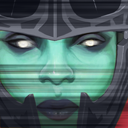 Blur
Blur you'll do no damage to her, even with some levels in
 Alacrity
Alacrity and she will constantly harrass you down with her
 Stifling Dagger
Stifling Dagger.
There is no build to straight up win this lineup, but there is this interessting build, also invented/populated by this Invoker spammer Sumiya.
You start with
 Magic Wand
Magic Wand and Tangoes, either one full set or Ironwood Branch and pulled ones. Then your next items are a
 Ring of Basilius
Ring of Basilius and two more
 Ring of Protection
Ring of Protections.
If you get those items before she fully takes over the lane, you can actually stand quite good against her. You'll still need help to actually win the lane, but you can now survive and farm savely.
You can follow this up by going an armor fucused build, but only consider this, if the whole enemy team is based on physical damage.
So if you can do fine against the rest of their team with usual items, go a normal route with Midas and Aghs. Just remember to get an armor based item againt her anyway as defensive item later on. Preferably
 Shiva's Guard
Shiva's Guard or if it has additional use a
 Lotus Orb
Lotus Orb.
Tinker can be quite the annoying hero to play against. He'll blind you and harrass you down a lot, so it is quite hard to lane against him, especially as you don't have any lane control spells.
Tinker is also a hero that can be quite dominated with an QuasWex build. If you manage to catch him with a level 3 Wex
 EMP
EMP at level 5, he will be in quite big trouble as he won't have the mana to do his spells to annoy you.
Tinker alone can be a good reason to go QW as he will most likely be the hero to focus on on your enemies team. Keeping him down can win you the game, so have this build in mind, even if otherwise you'd rather go for an Exort based build.
This is it for now here. If you have any suggestions or questions that could be turned into a chapter here, please do so in the comments.
Finish
Thanks for reading my guide.
I hope it was useful to either learn Invoker from the ground, as a dictionary about items and spells or just as a way to give you some new ideas about how to play him.
If you have any suggestions, comments, questions, please ask and write away, I'll hopefully go through them in time.
Have fun invoking.
Changelog
5/10/2017: Created Guide
9/12/2017: Update for 7.07 (new items, new build, new talents)
In patch 7.07 not too much changed for Inovker. The most important change are the talents, which are, even though they are all related to your spells now, less interesting, except the Cataclasm one. The new items are pretty much unrelevant. I've added a new build that is often used by Sumiya these days and as he is popular and pretty good with it, I thought it is worth to add it and explain the benefits/problems of it.
20/2/2018: Updated for 7.08/9
Changed Starting items slightly to adjust for new Tango cost and startgold.
Reworked QW build a bit to include more decisions on item choice.
Worked the glorious Meme-Hammer build into the considerations.
Watch the game DreamLeague S9, EU Qualifiers, Kinguin vs 5ANC for that build, funny inovative and not as bad as it sounds.
 Null Talisman
Null Talisman



























































































Quick Comment (3) View Comments
You need to log in before commenting.